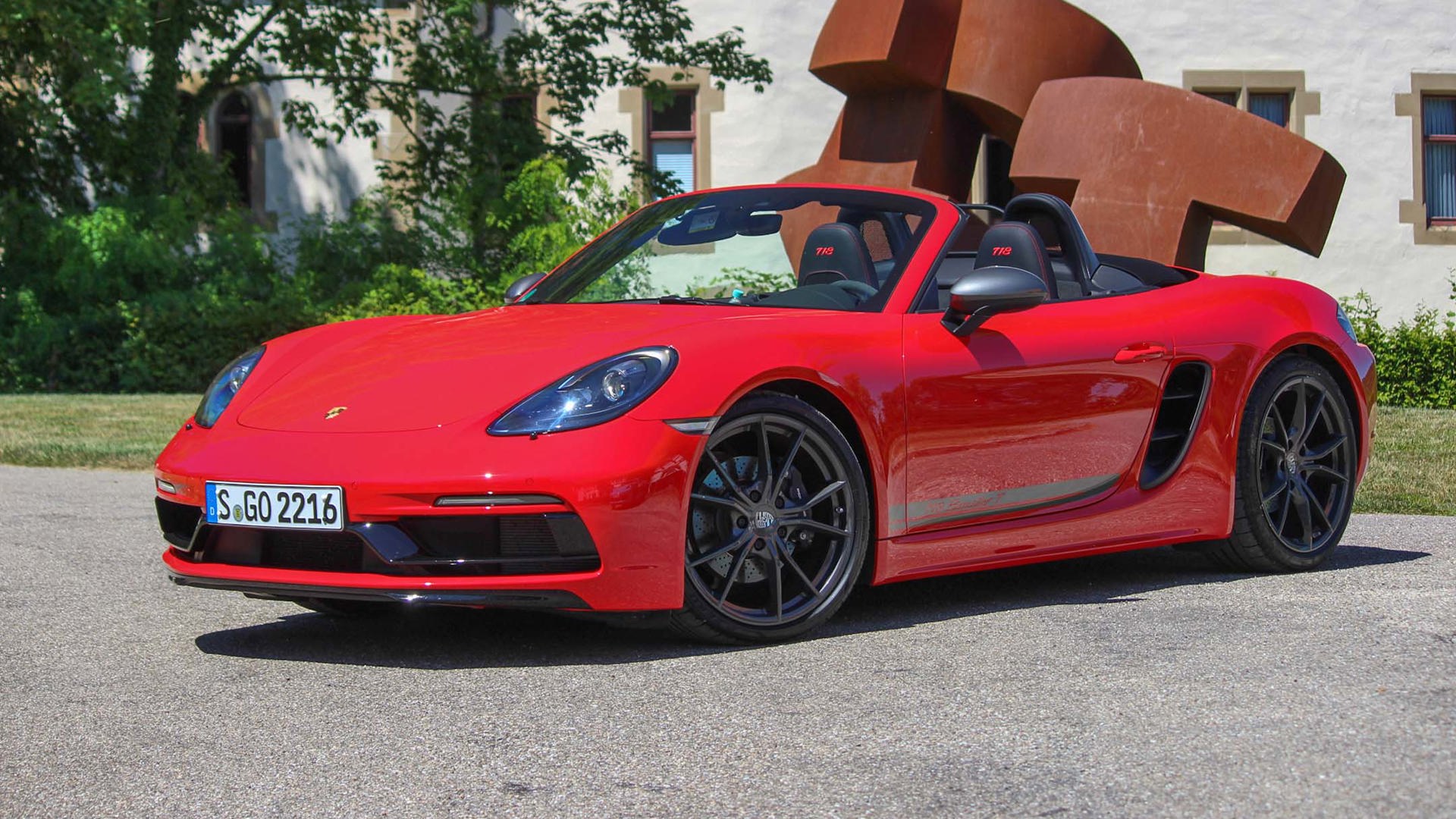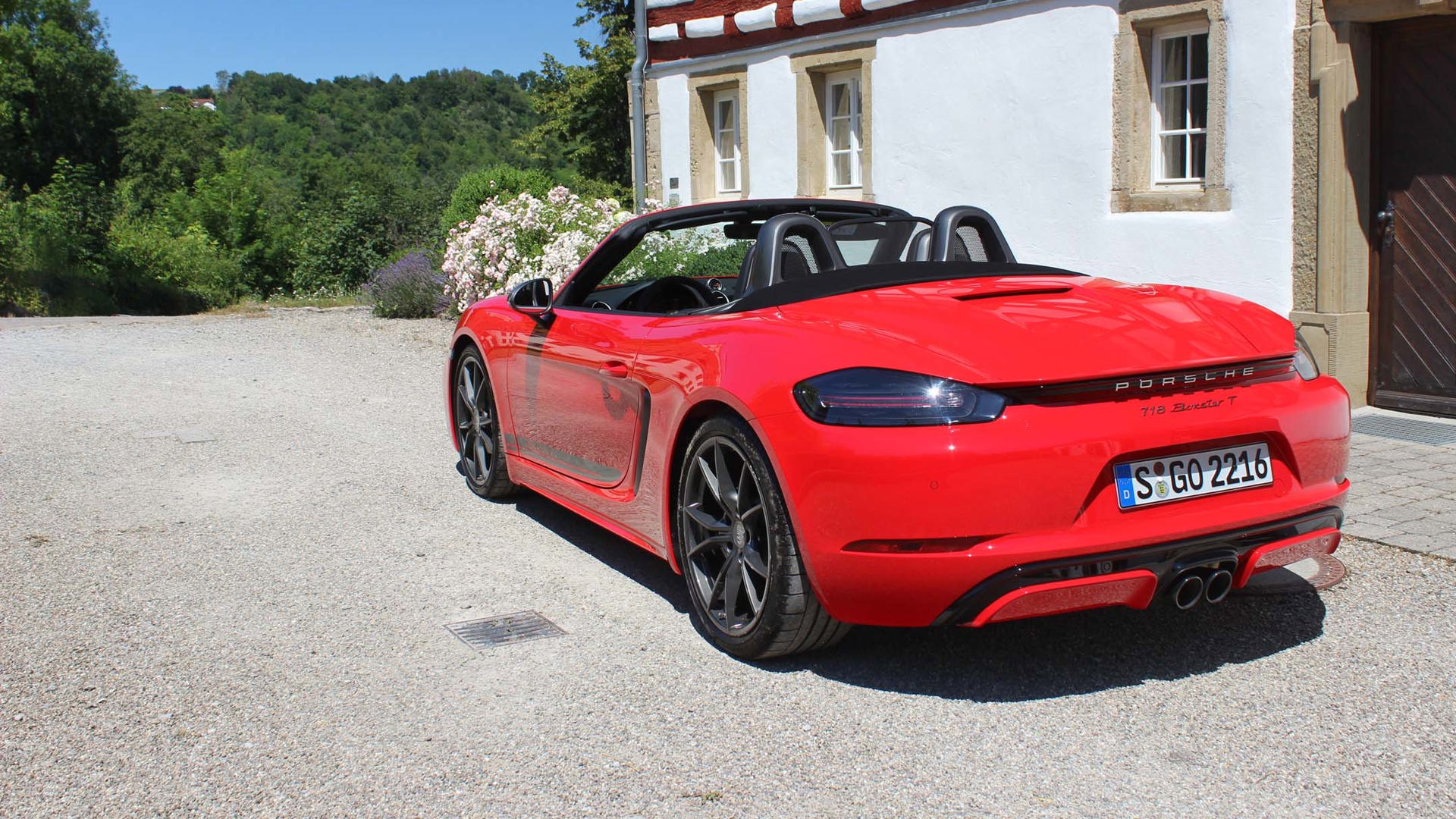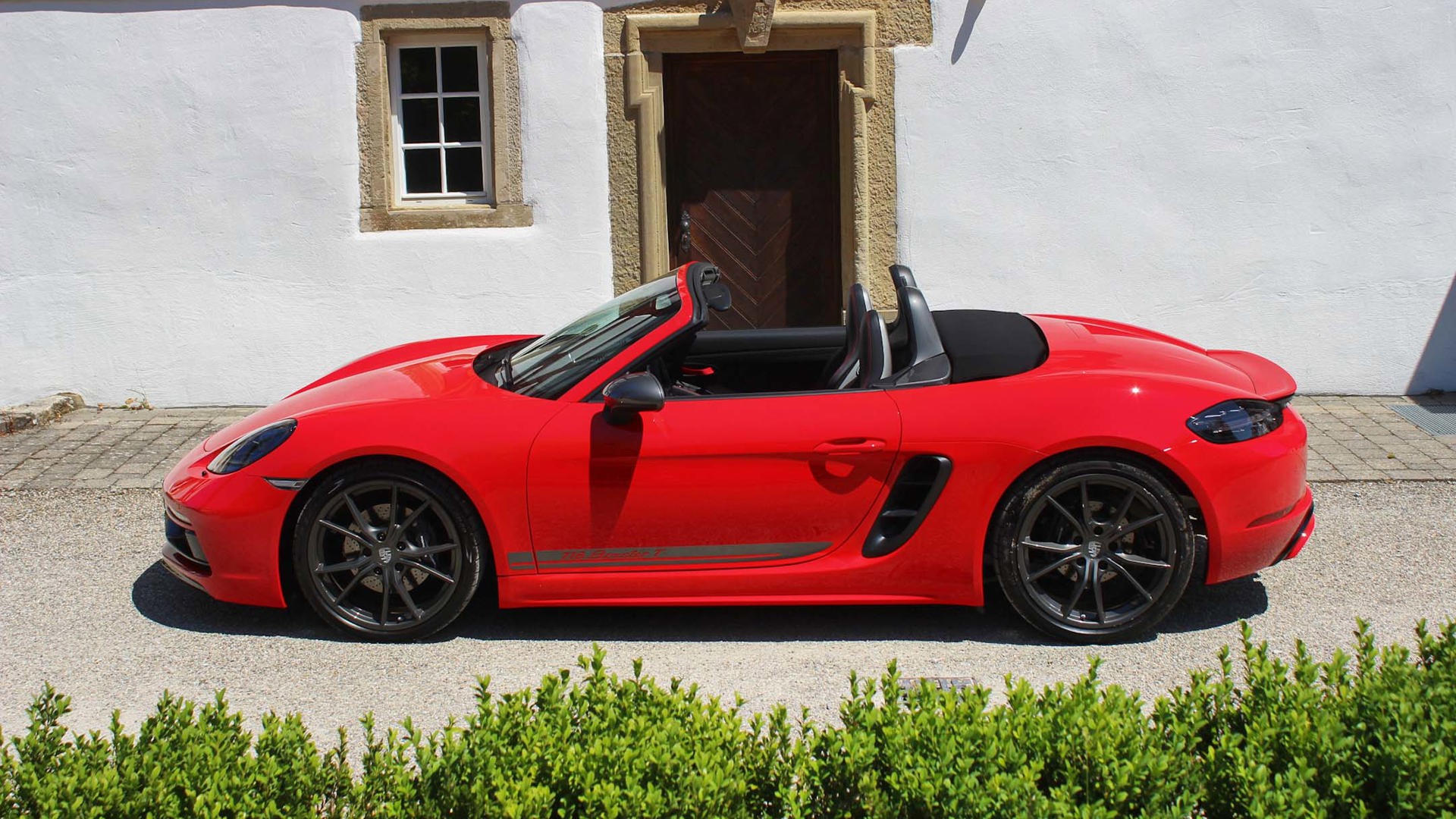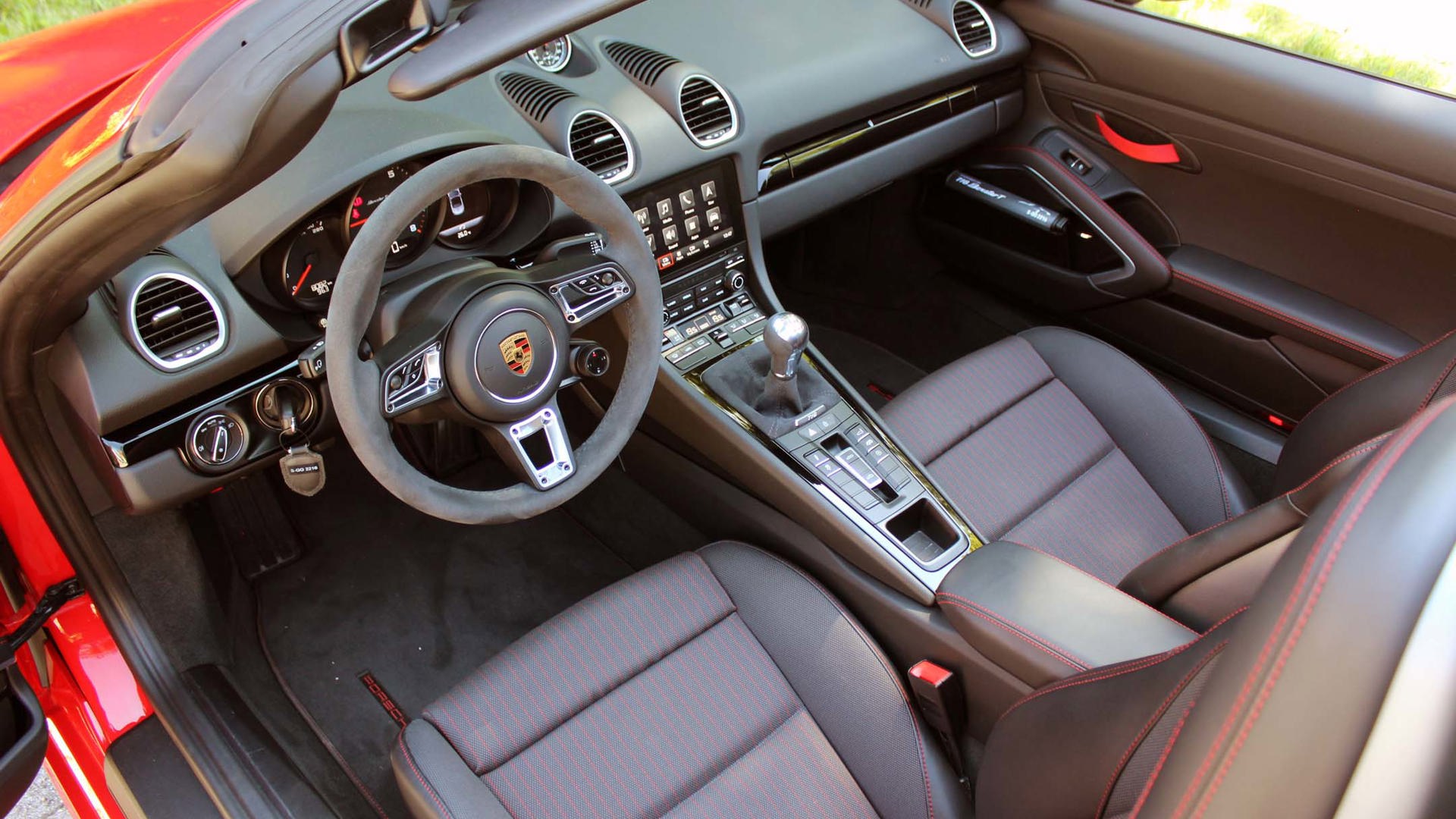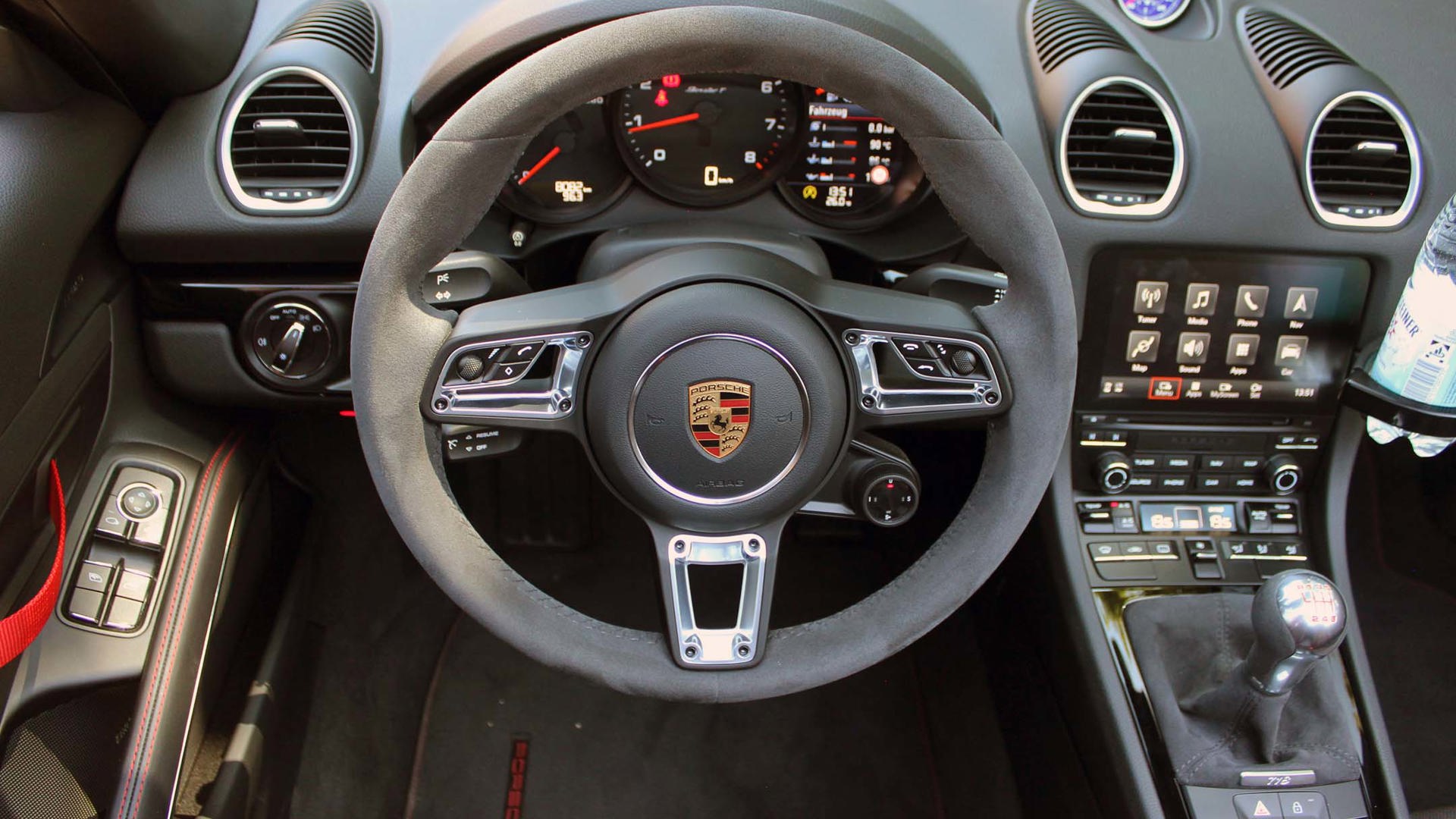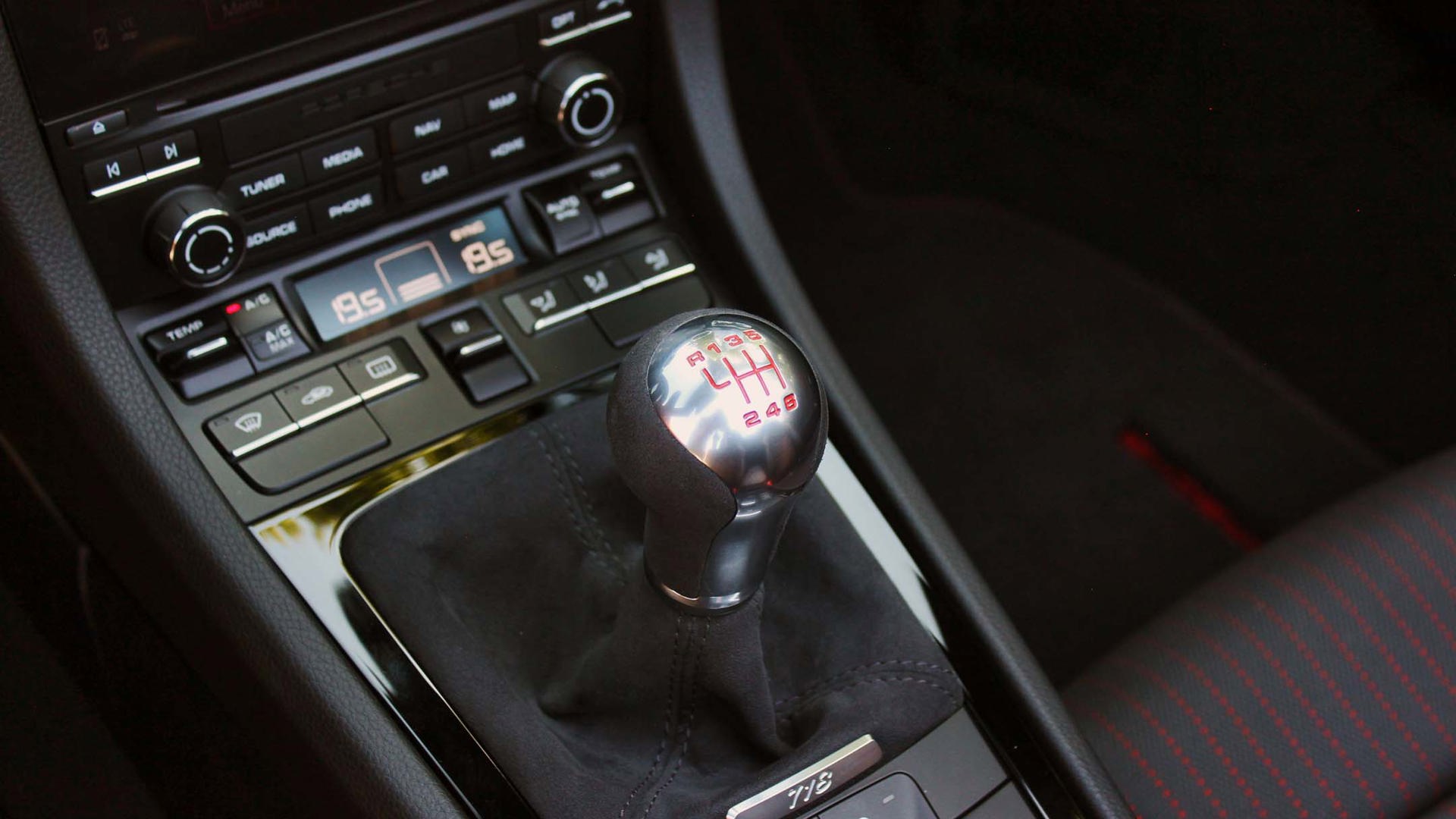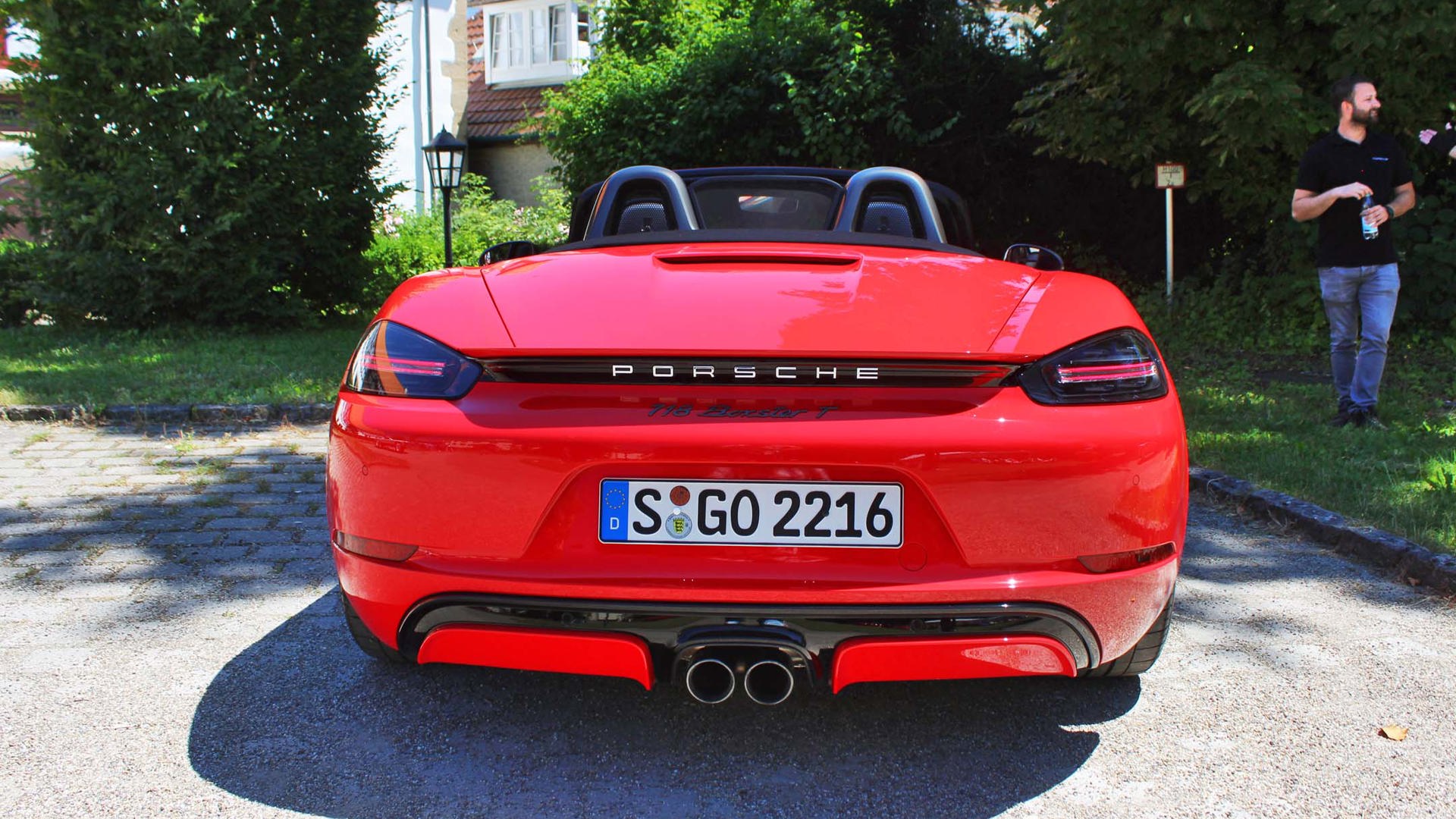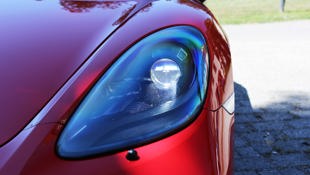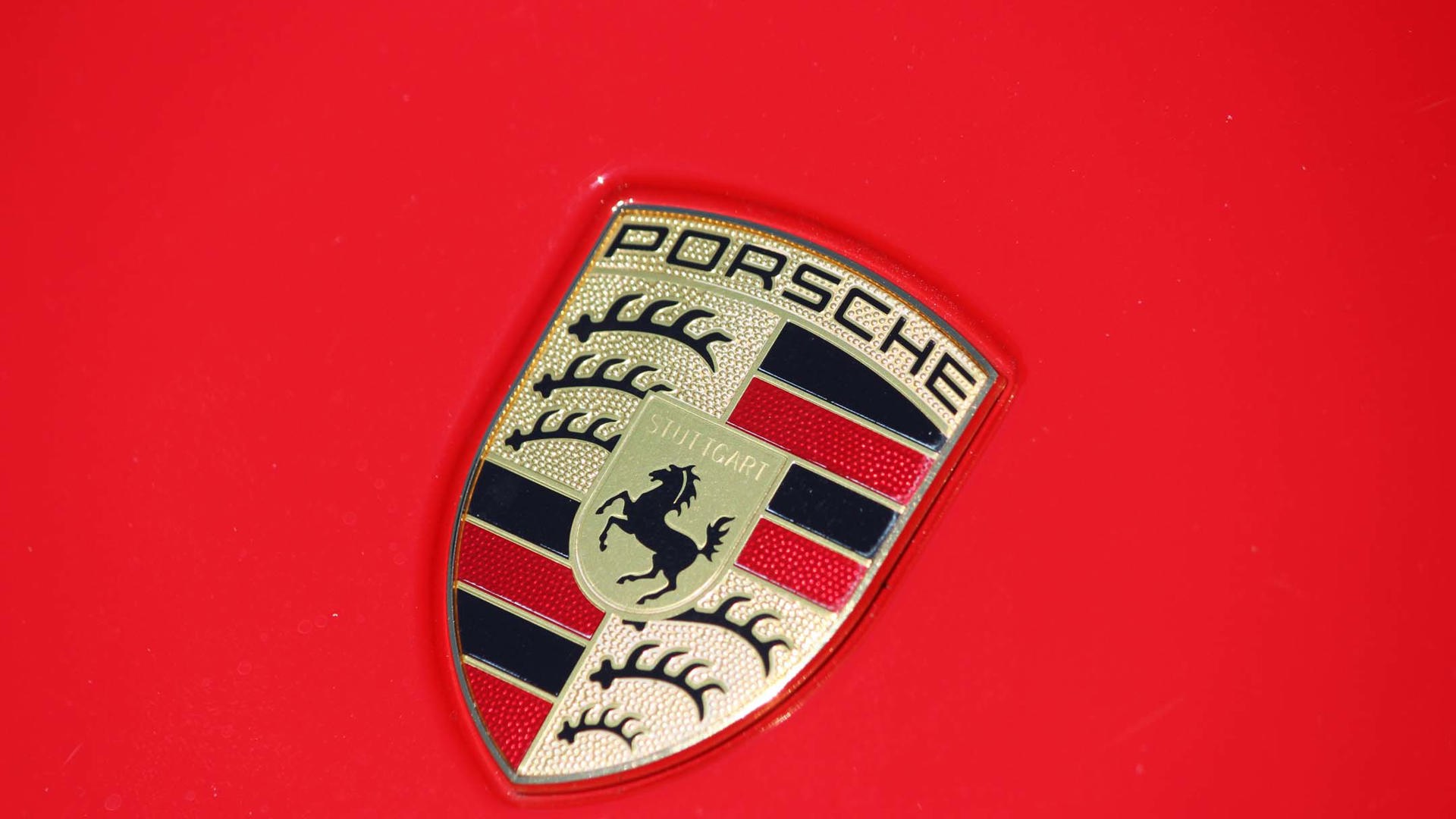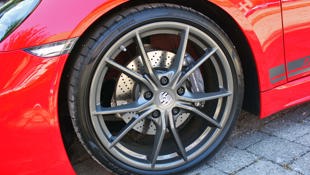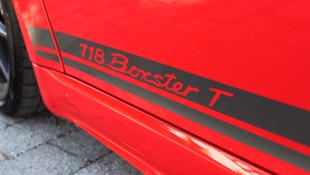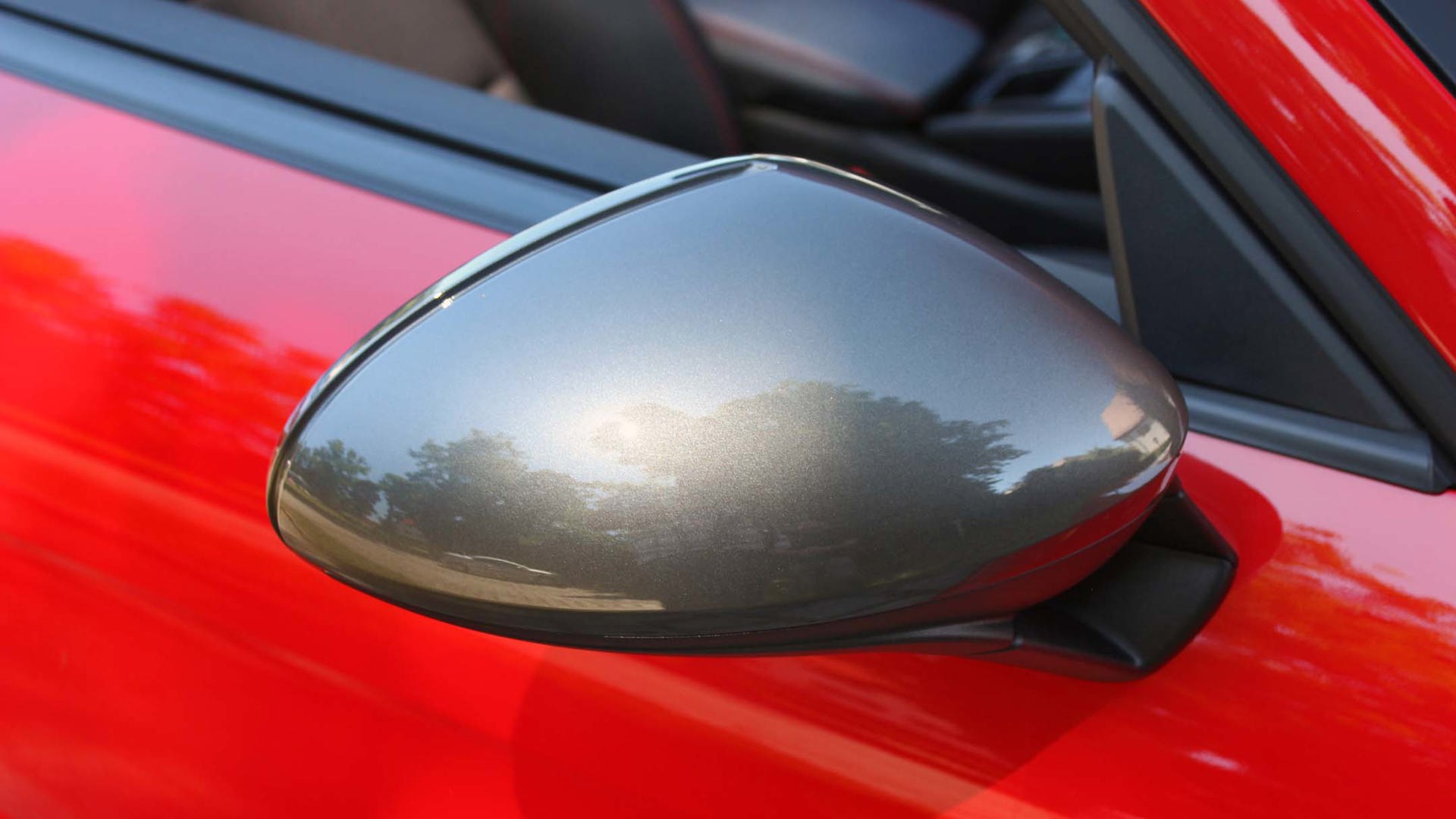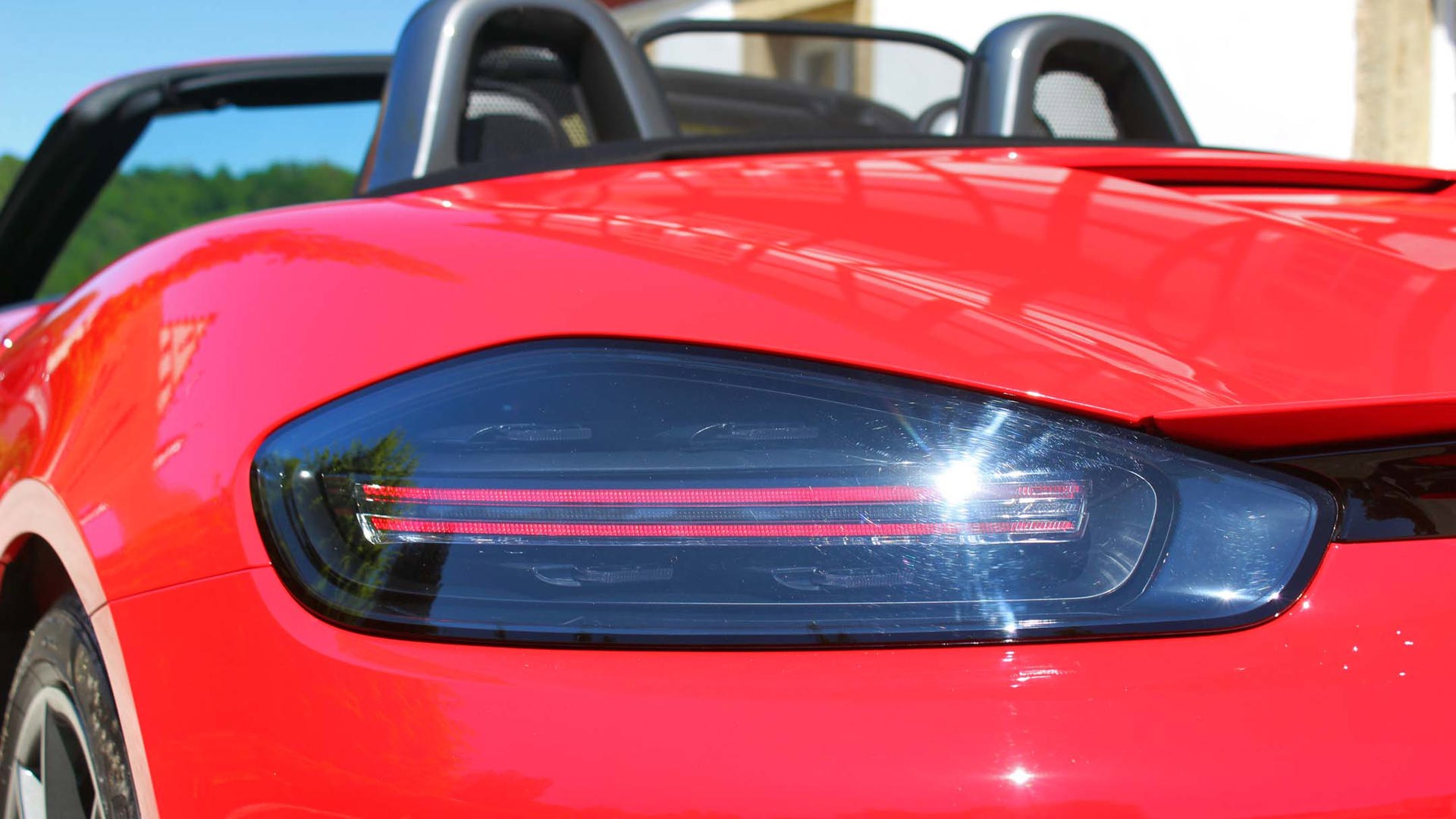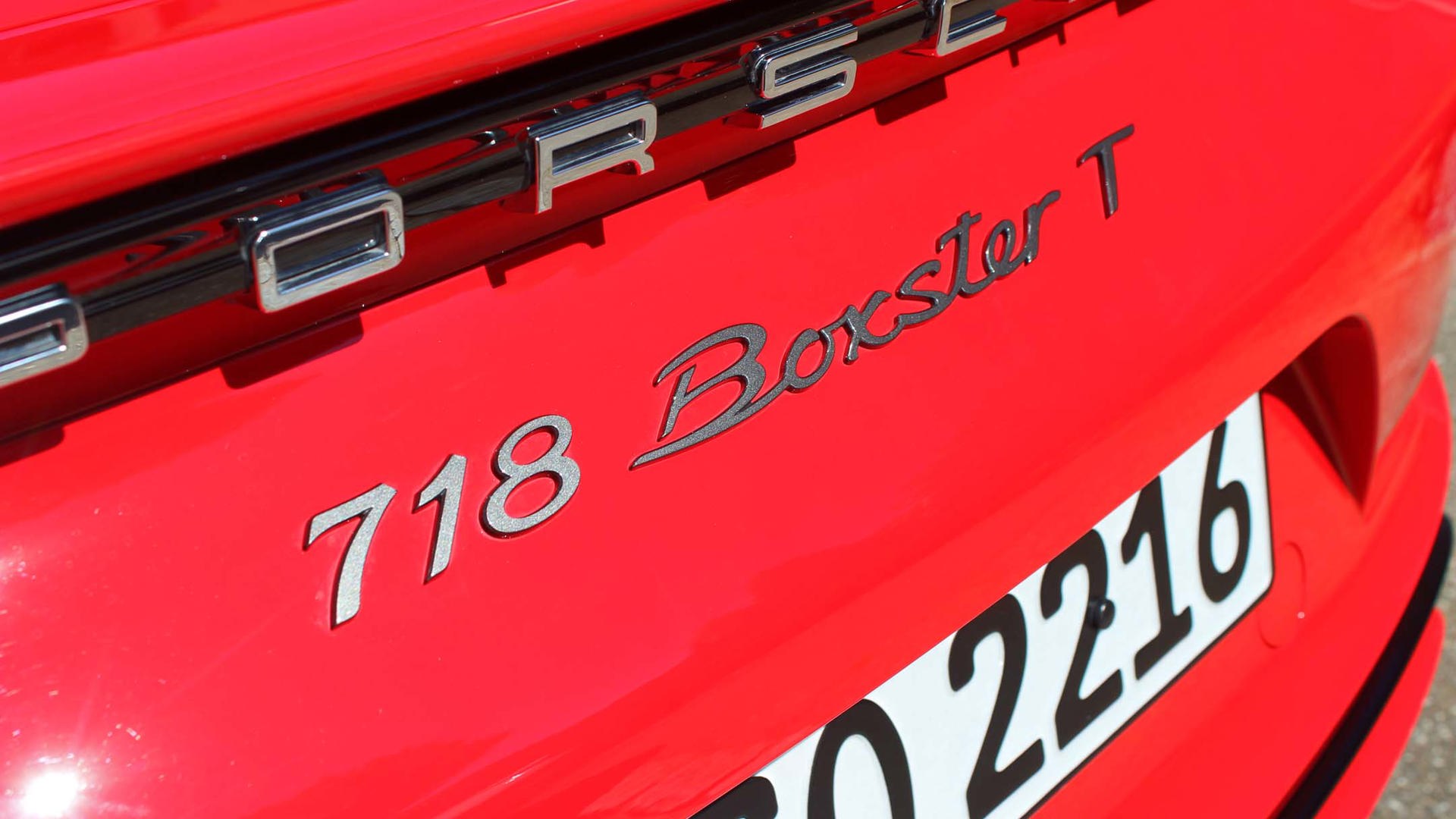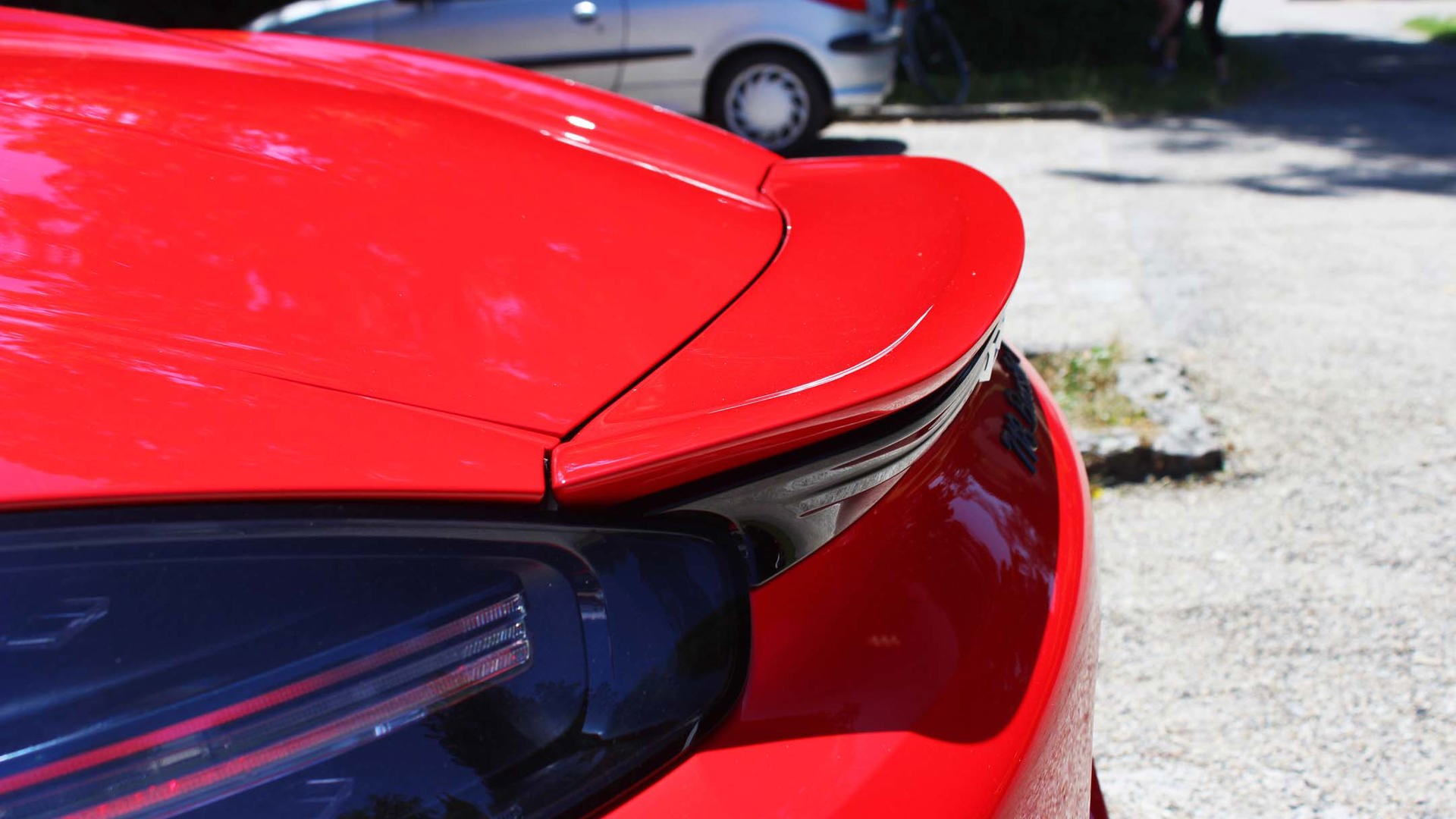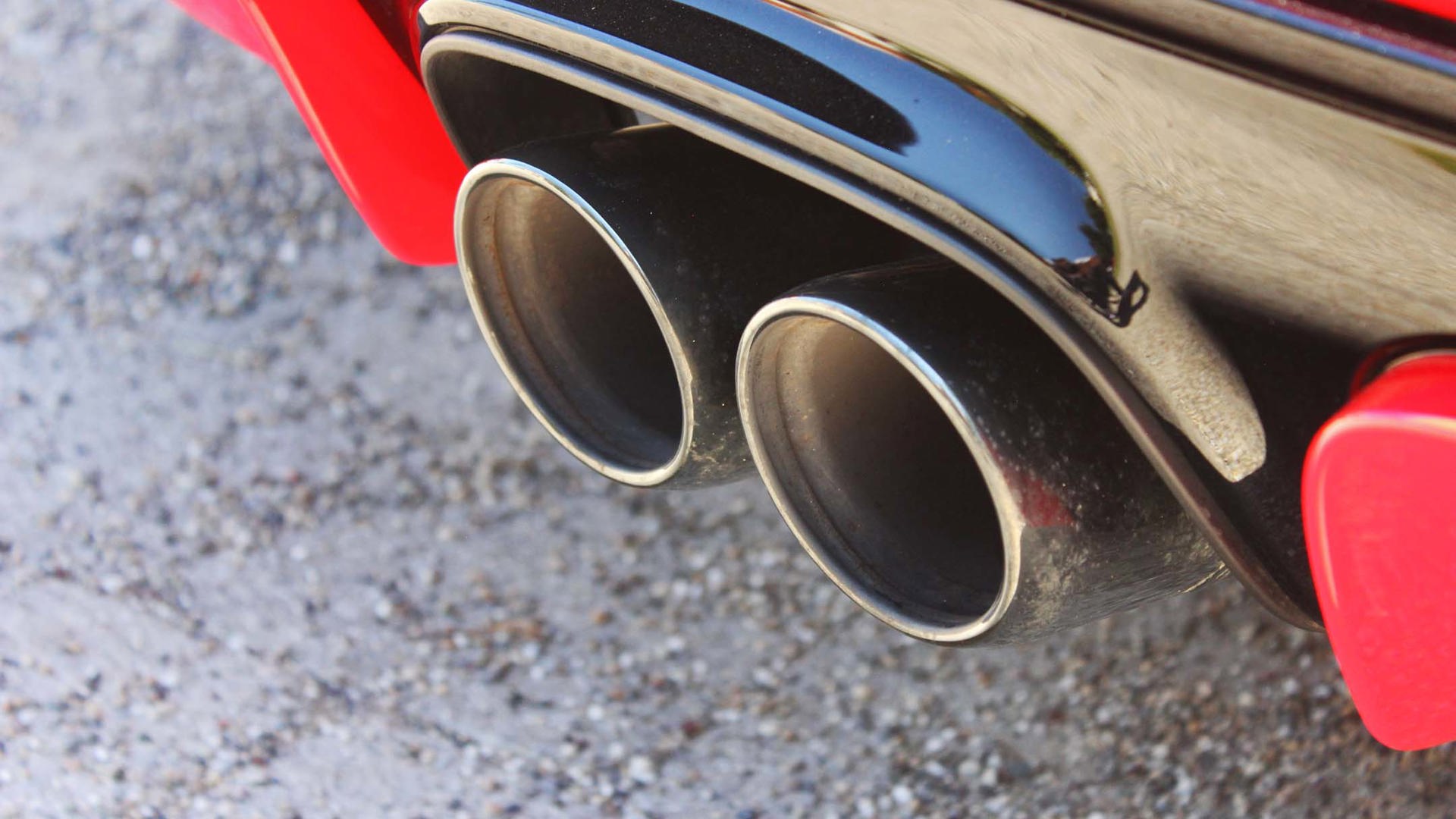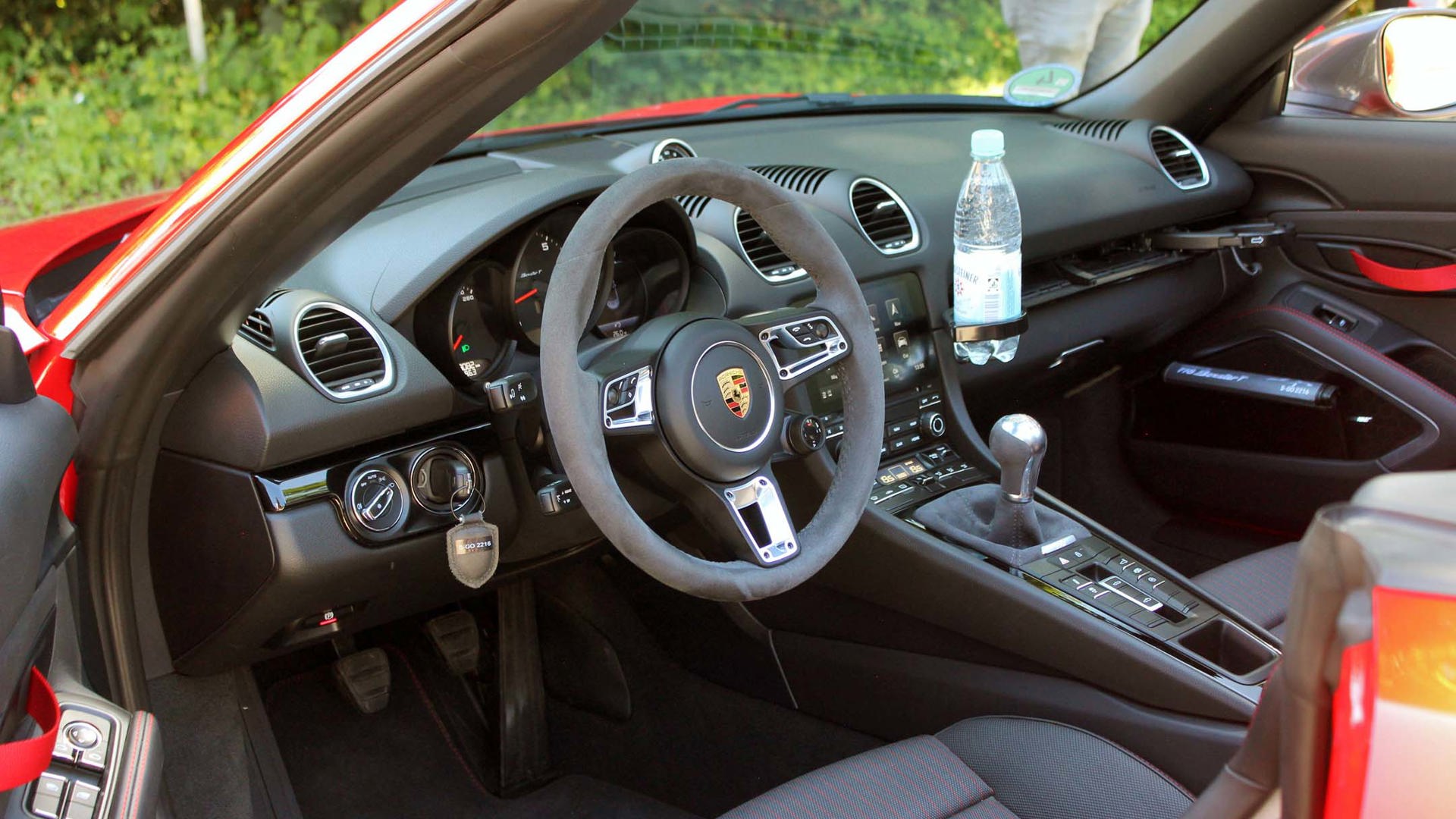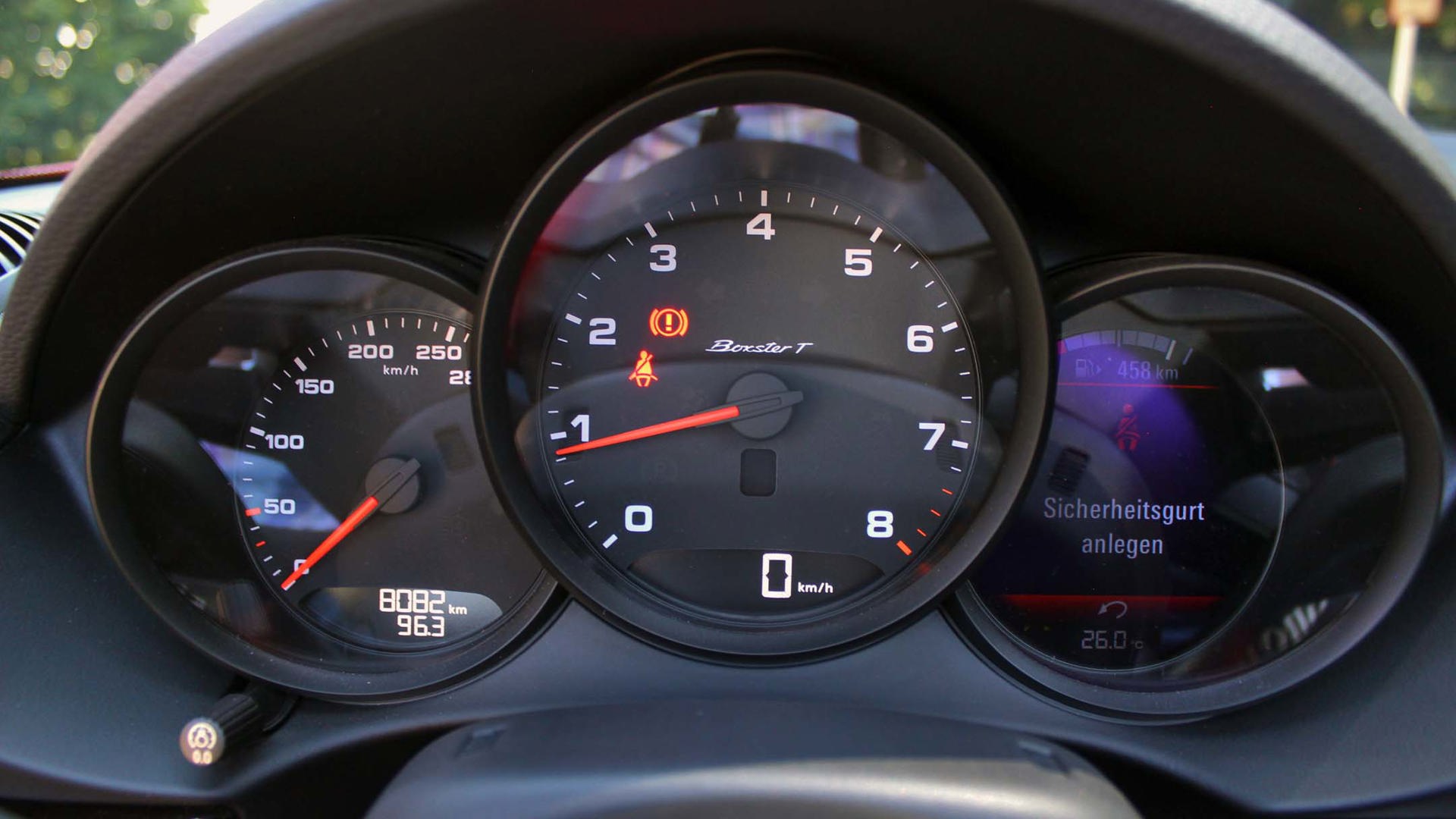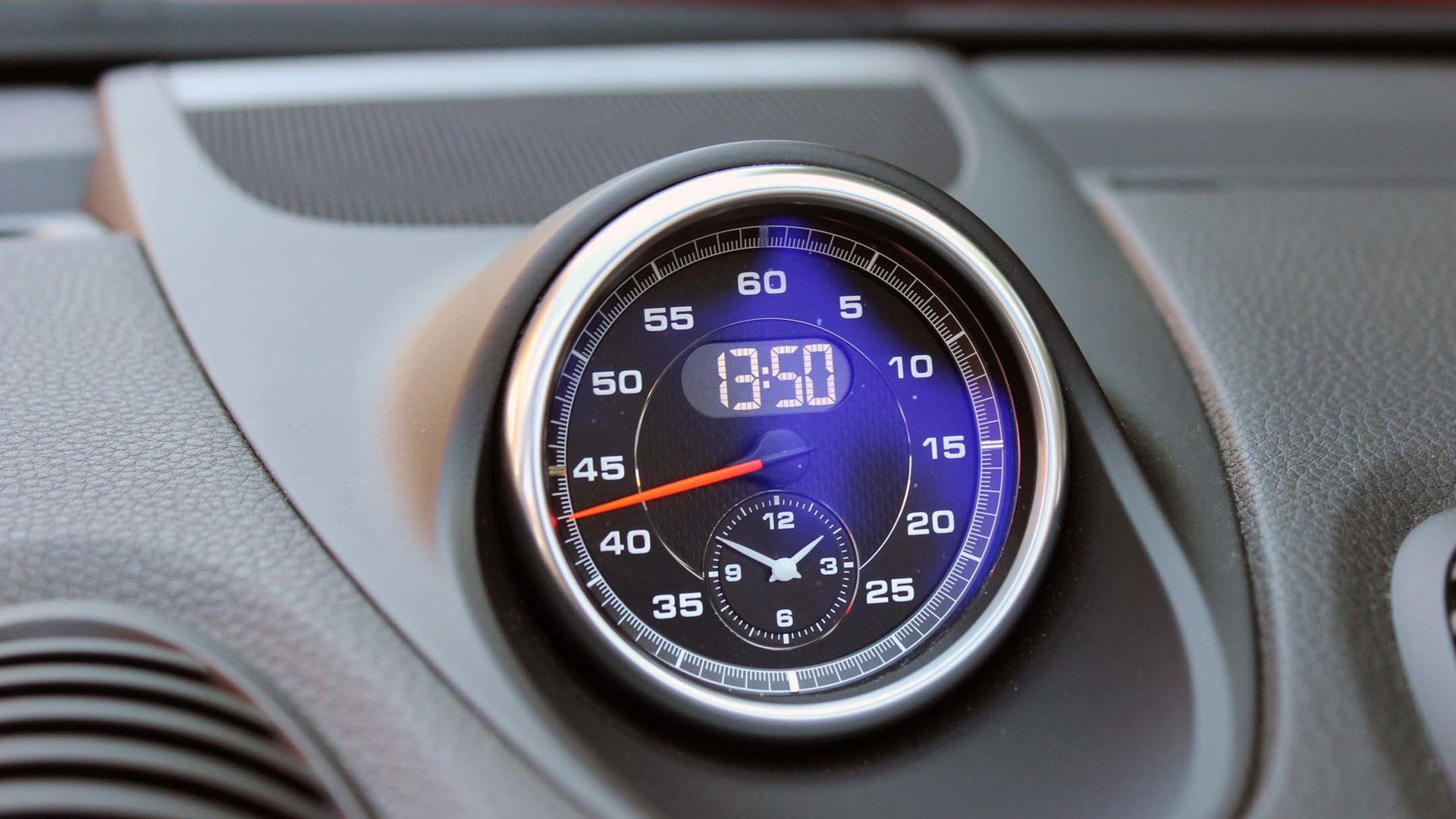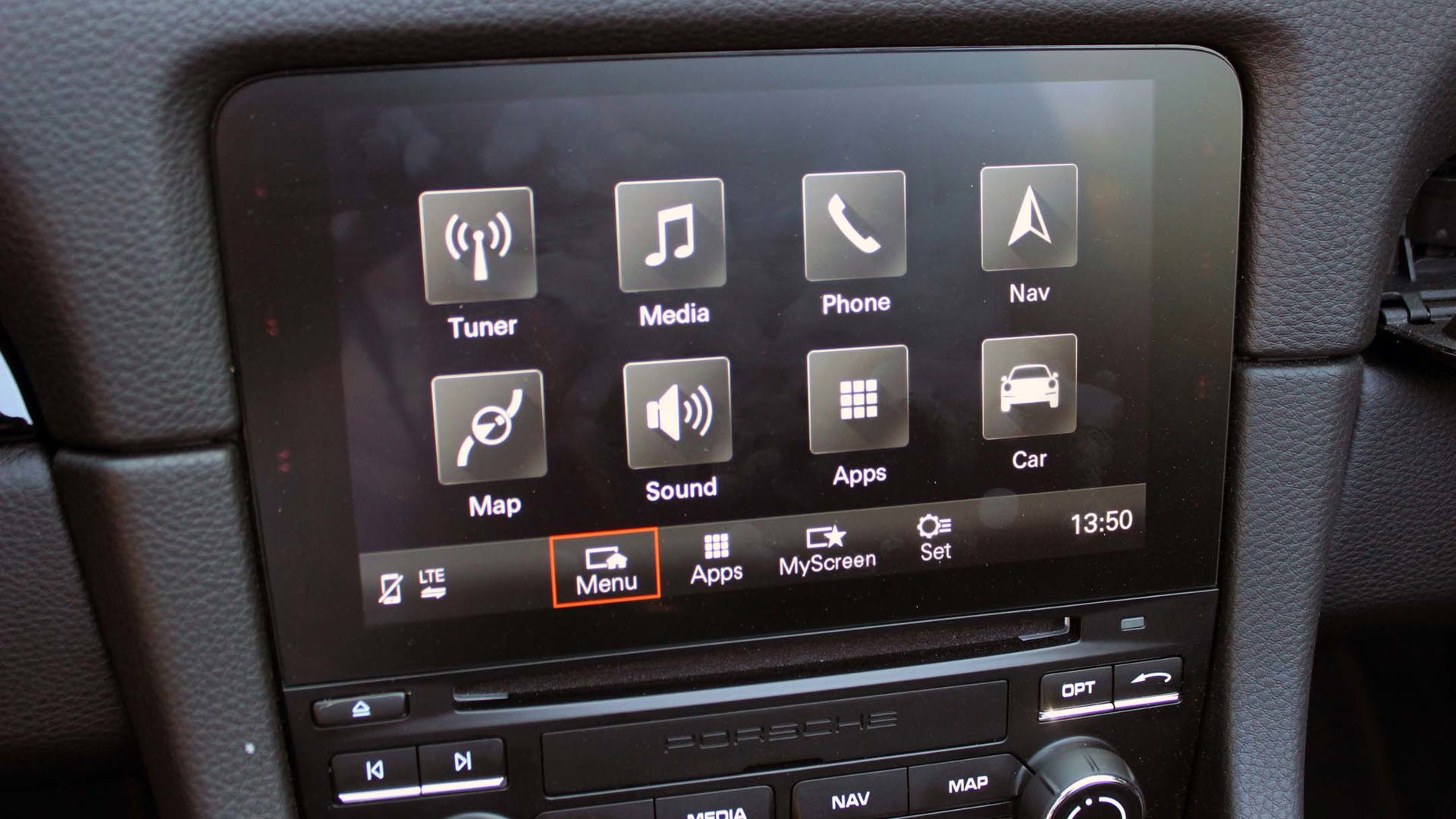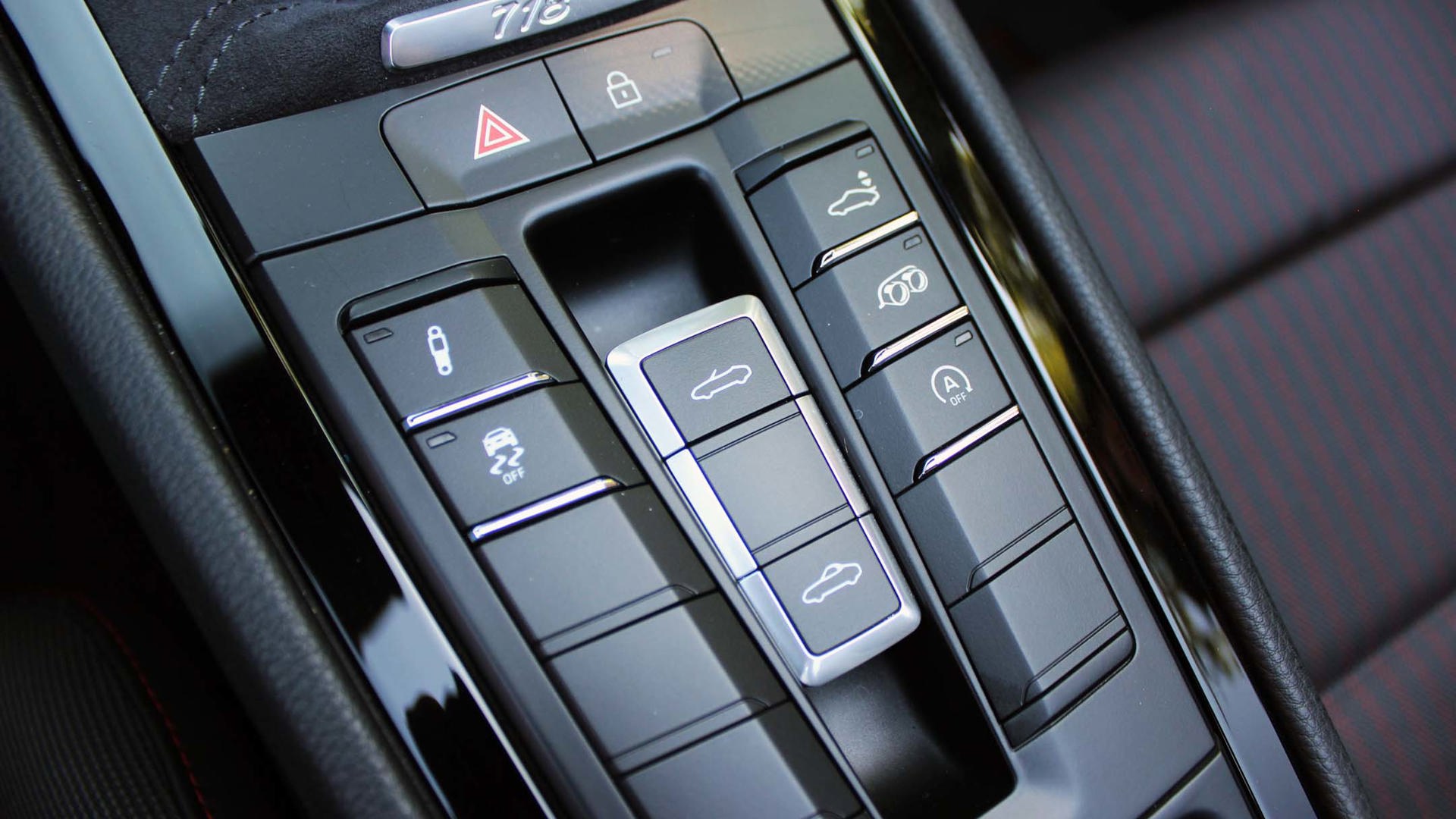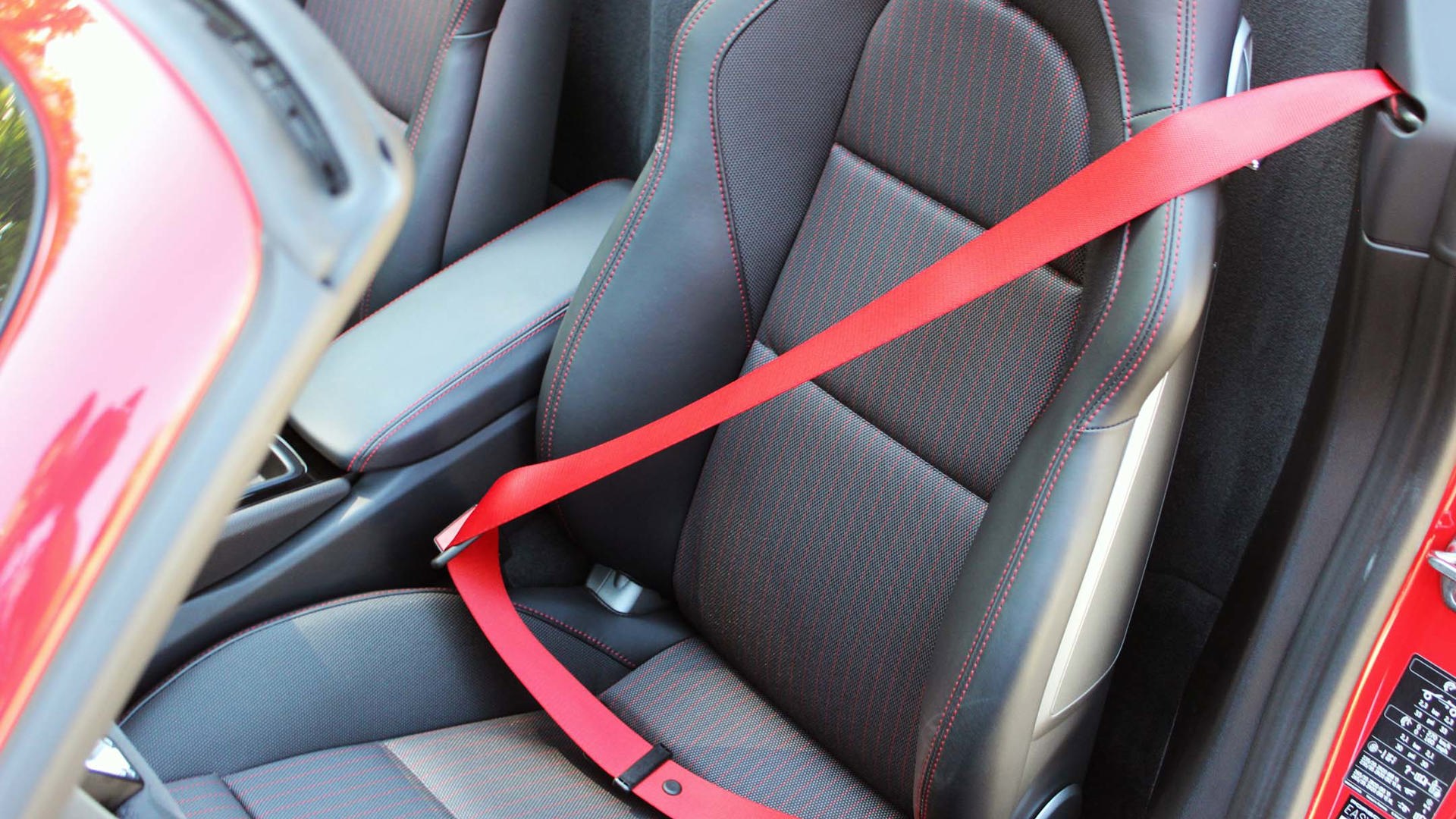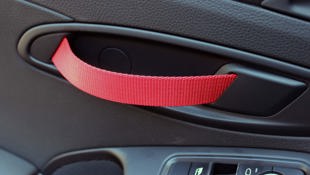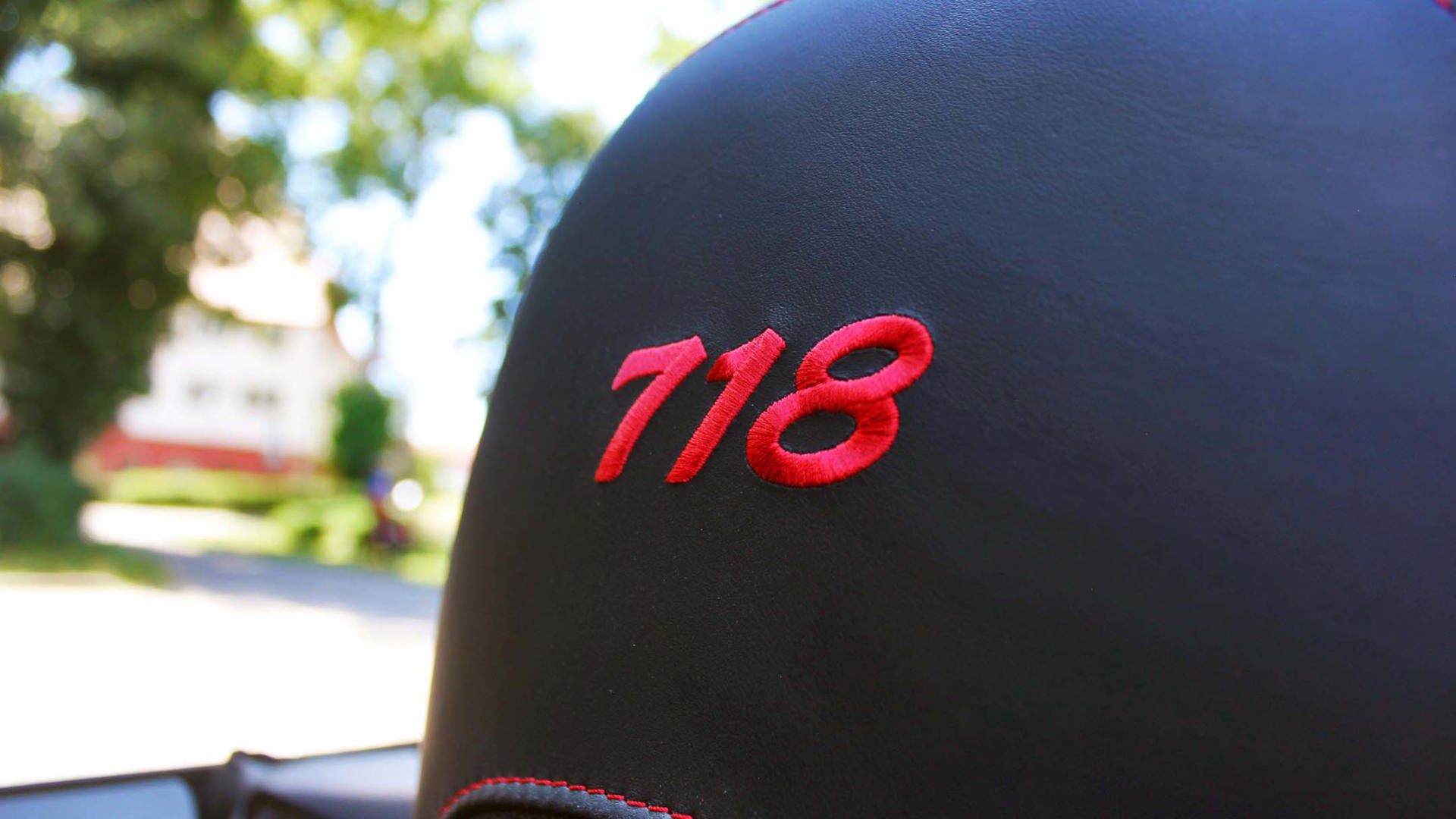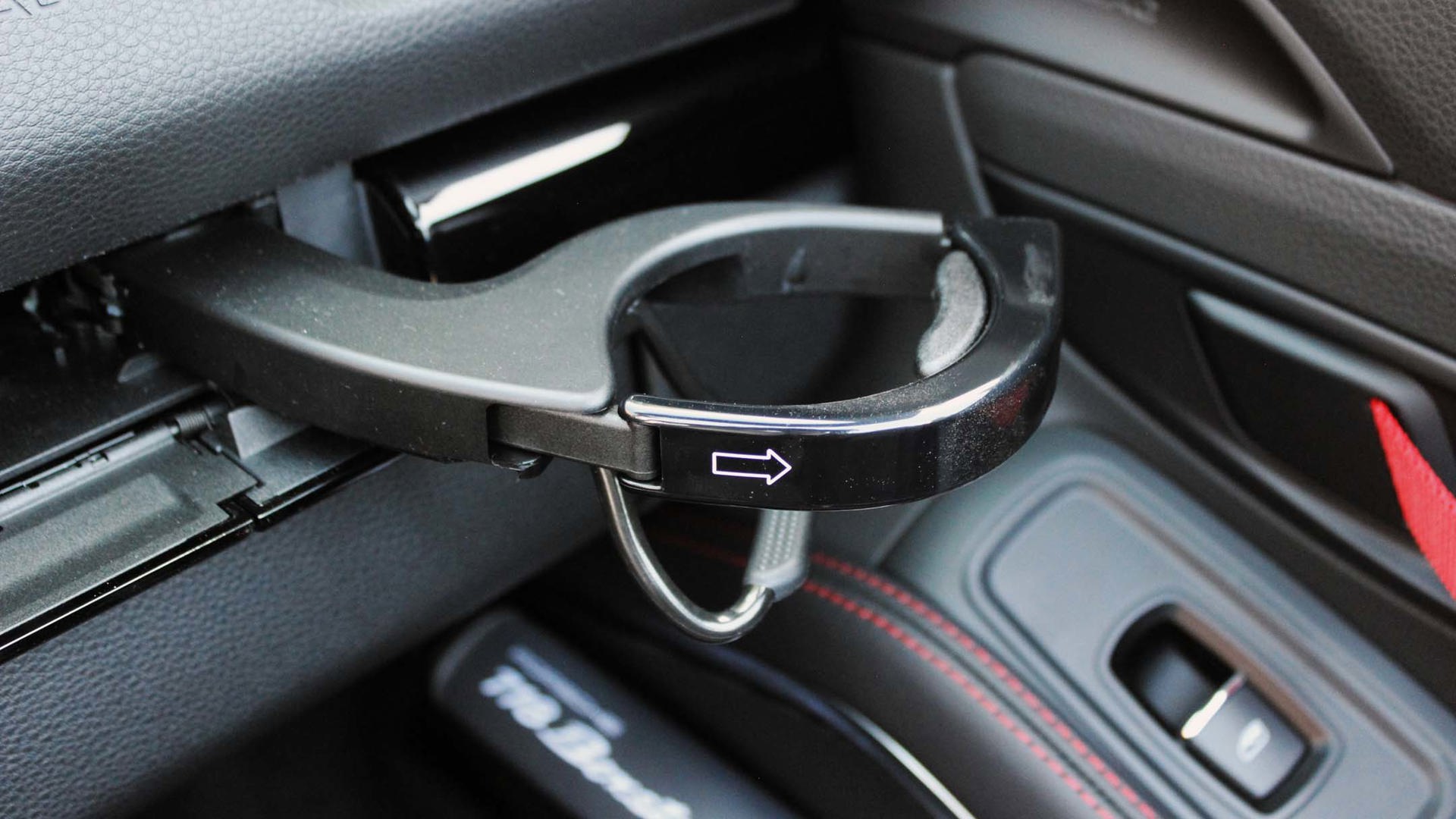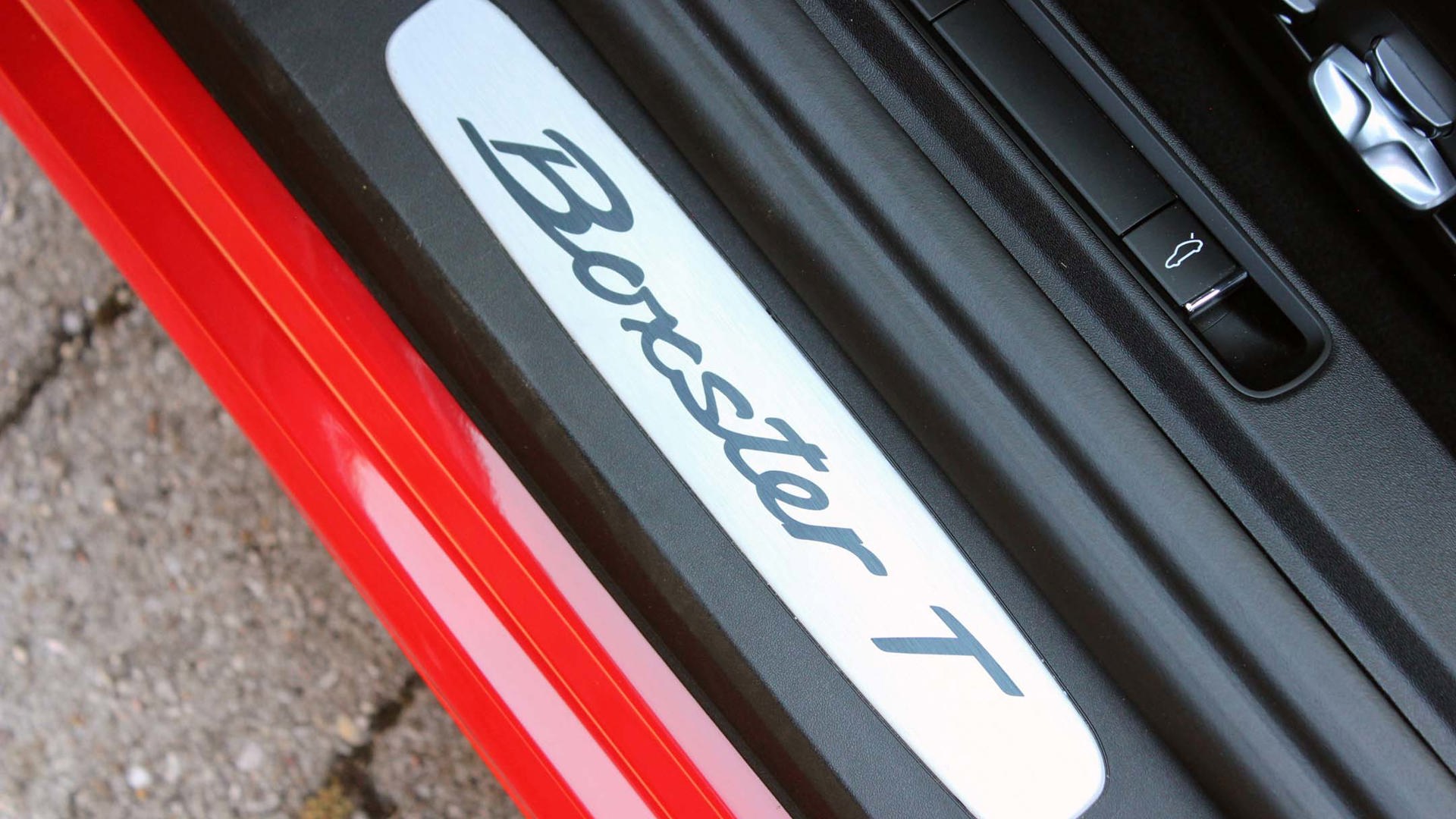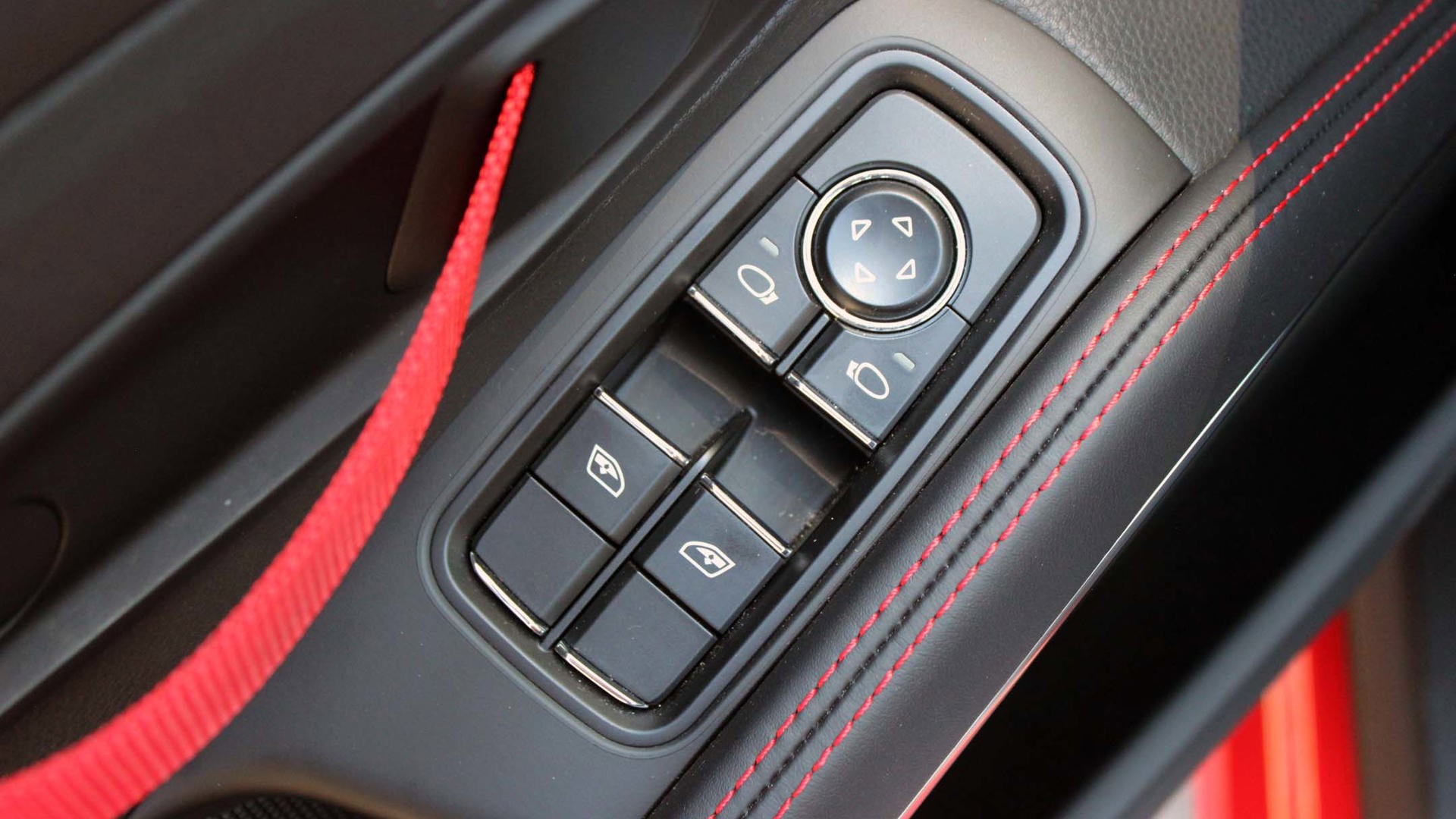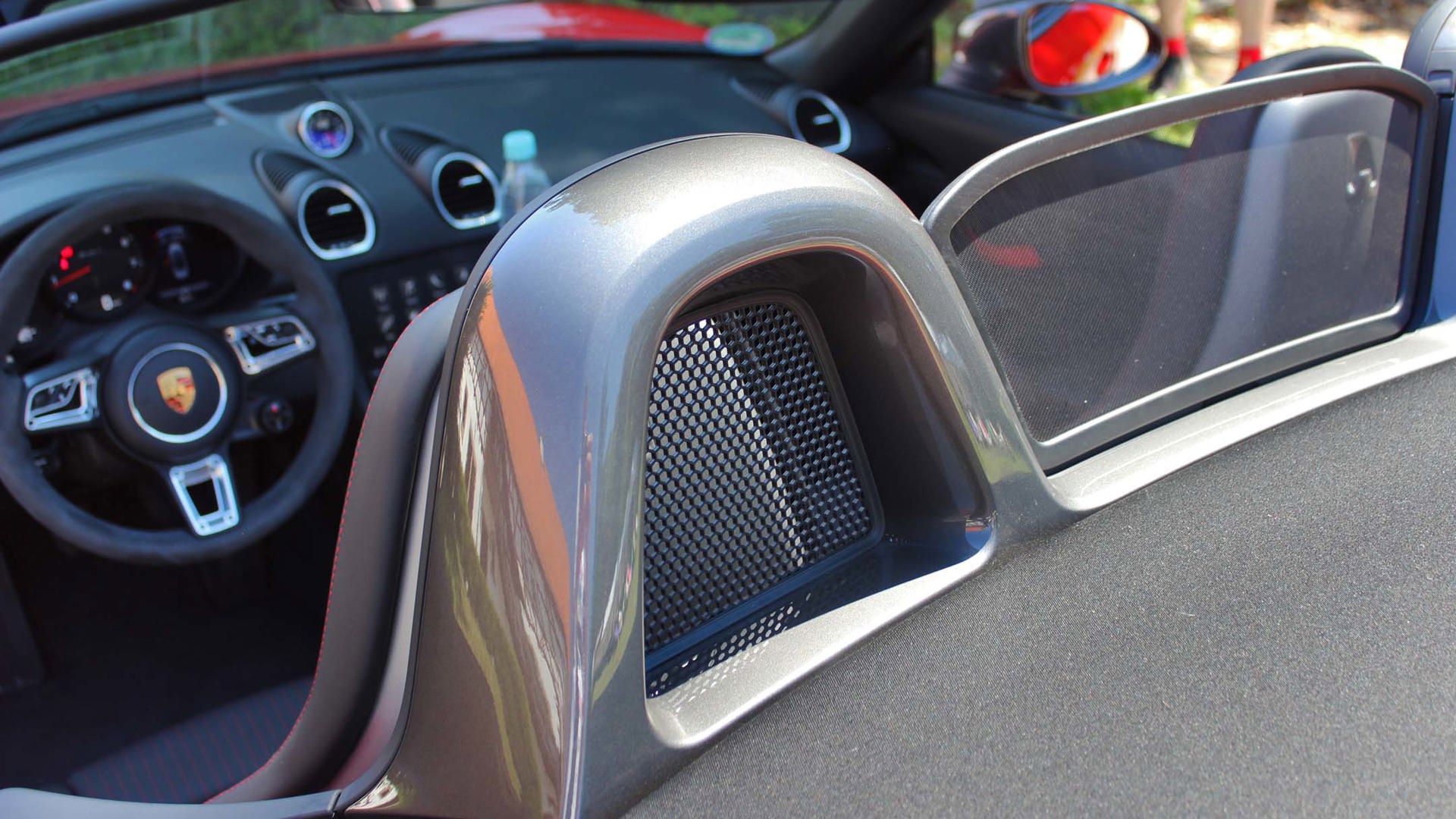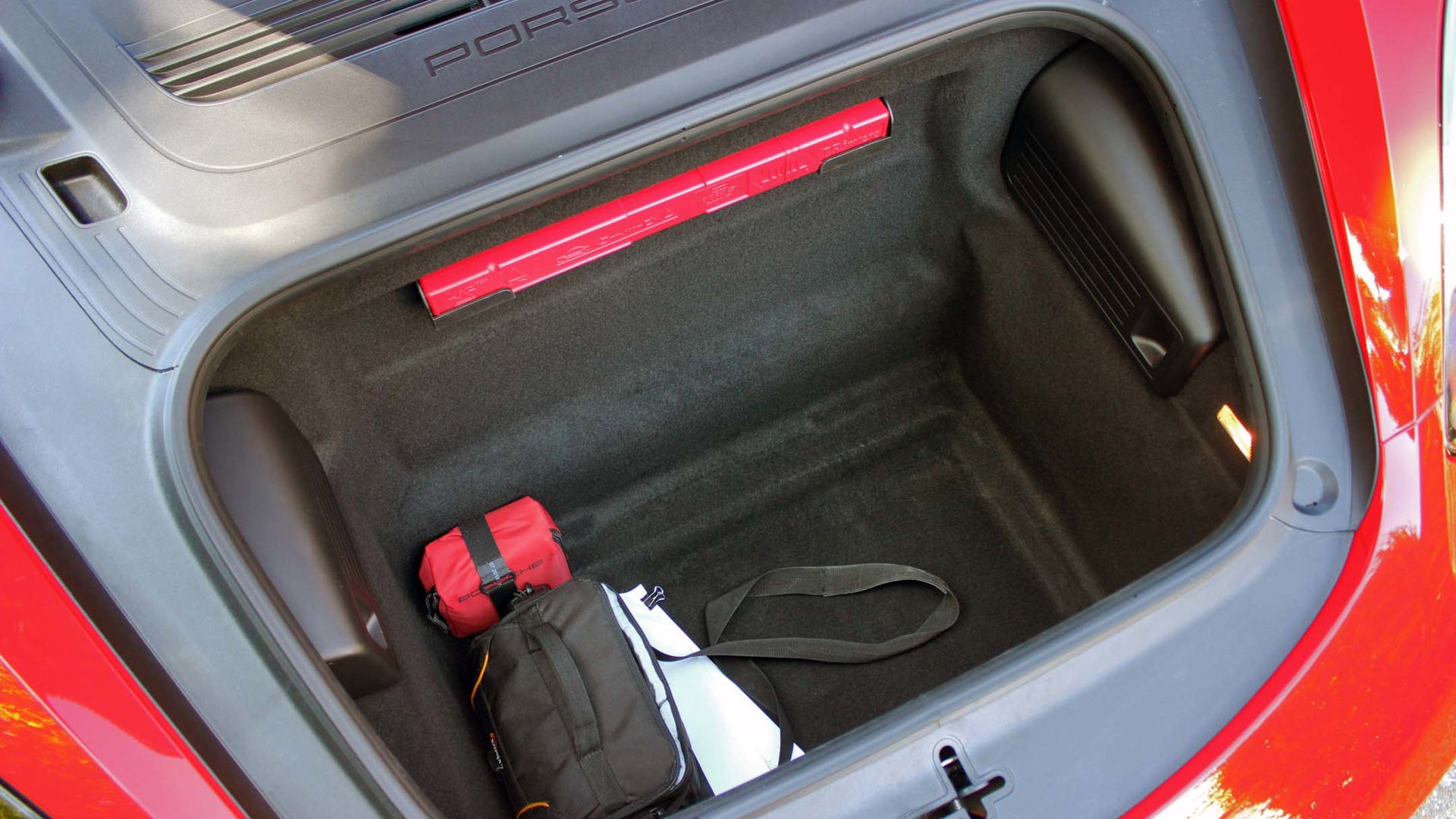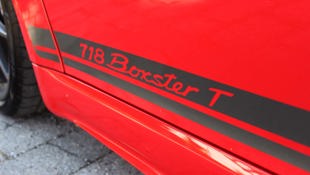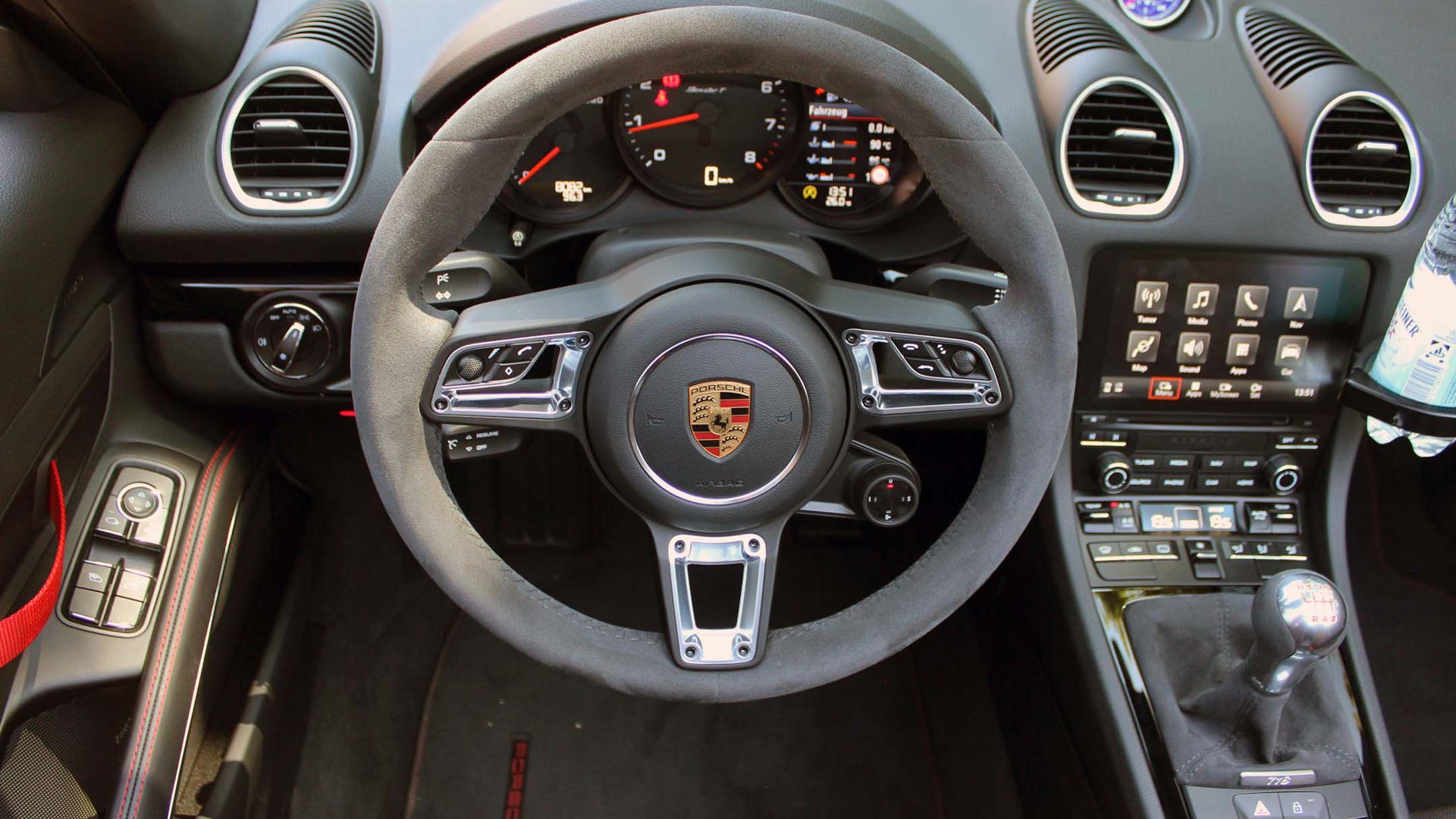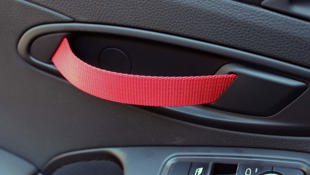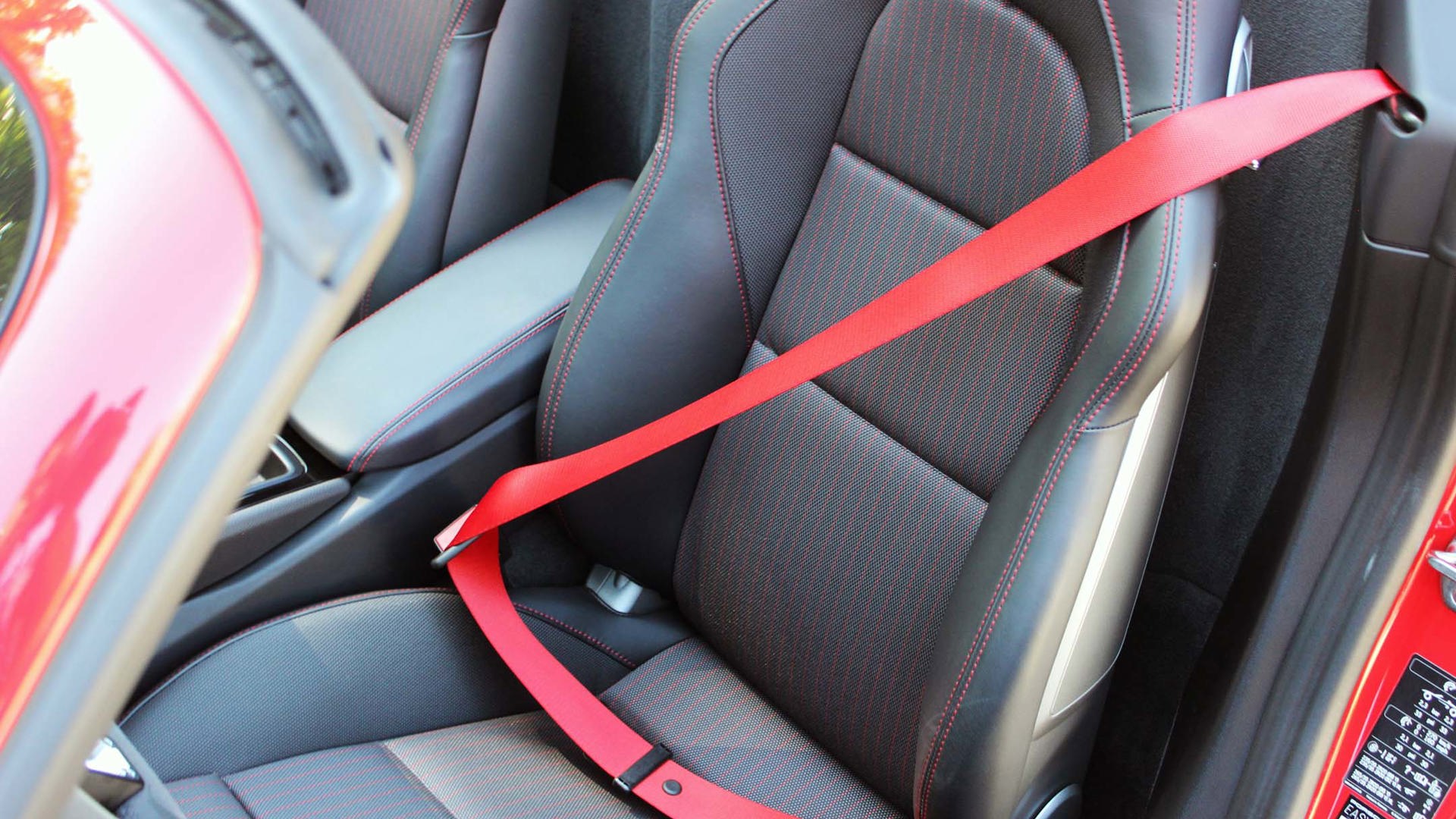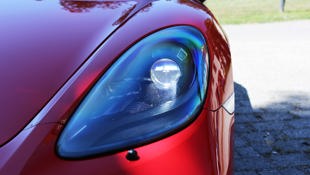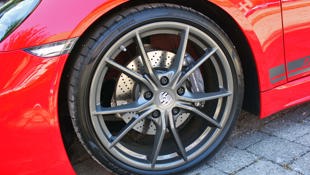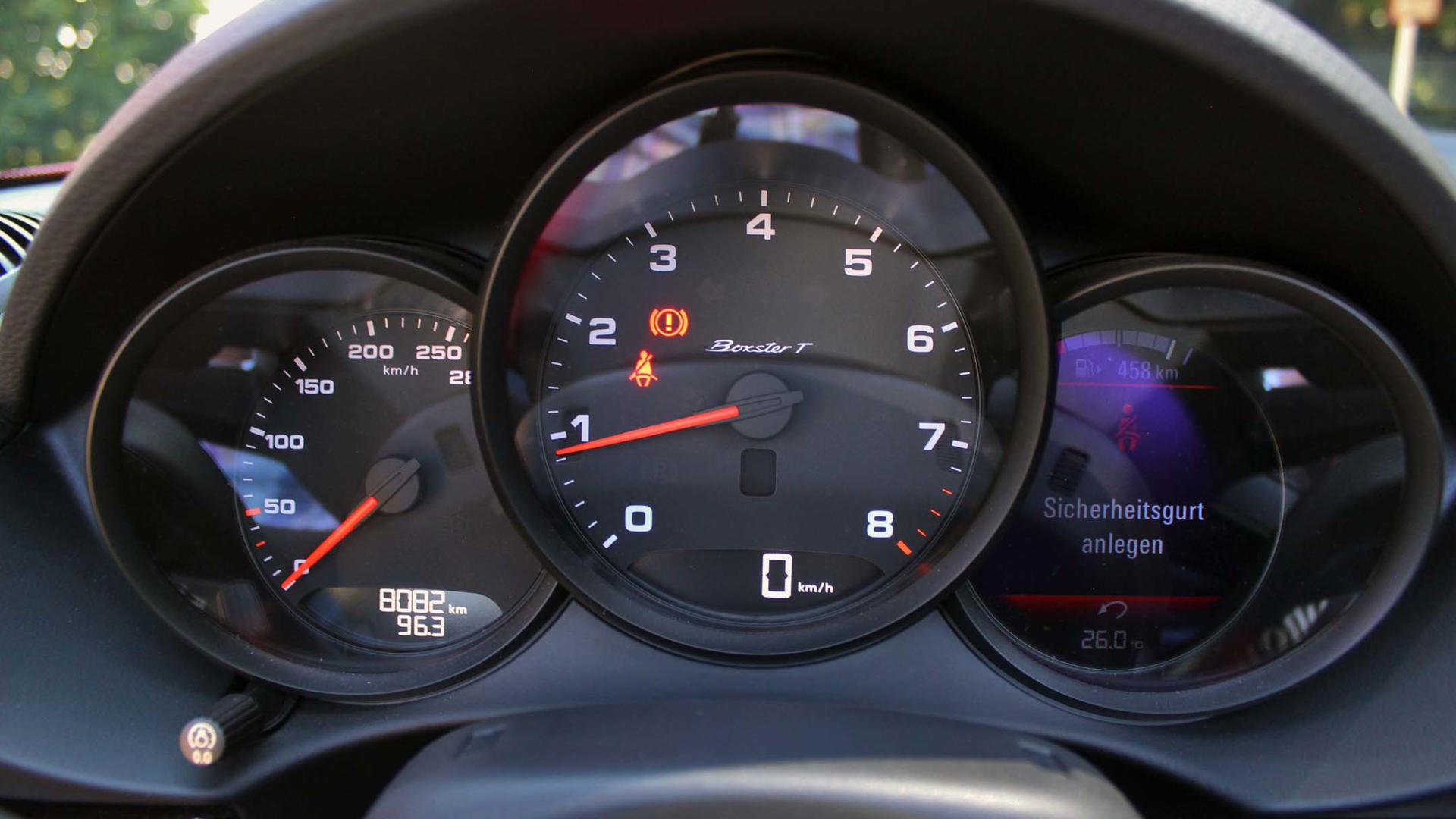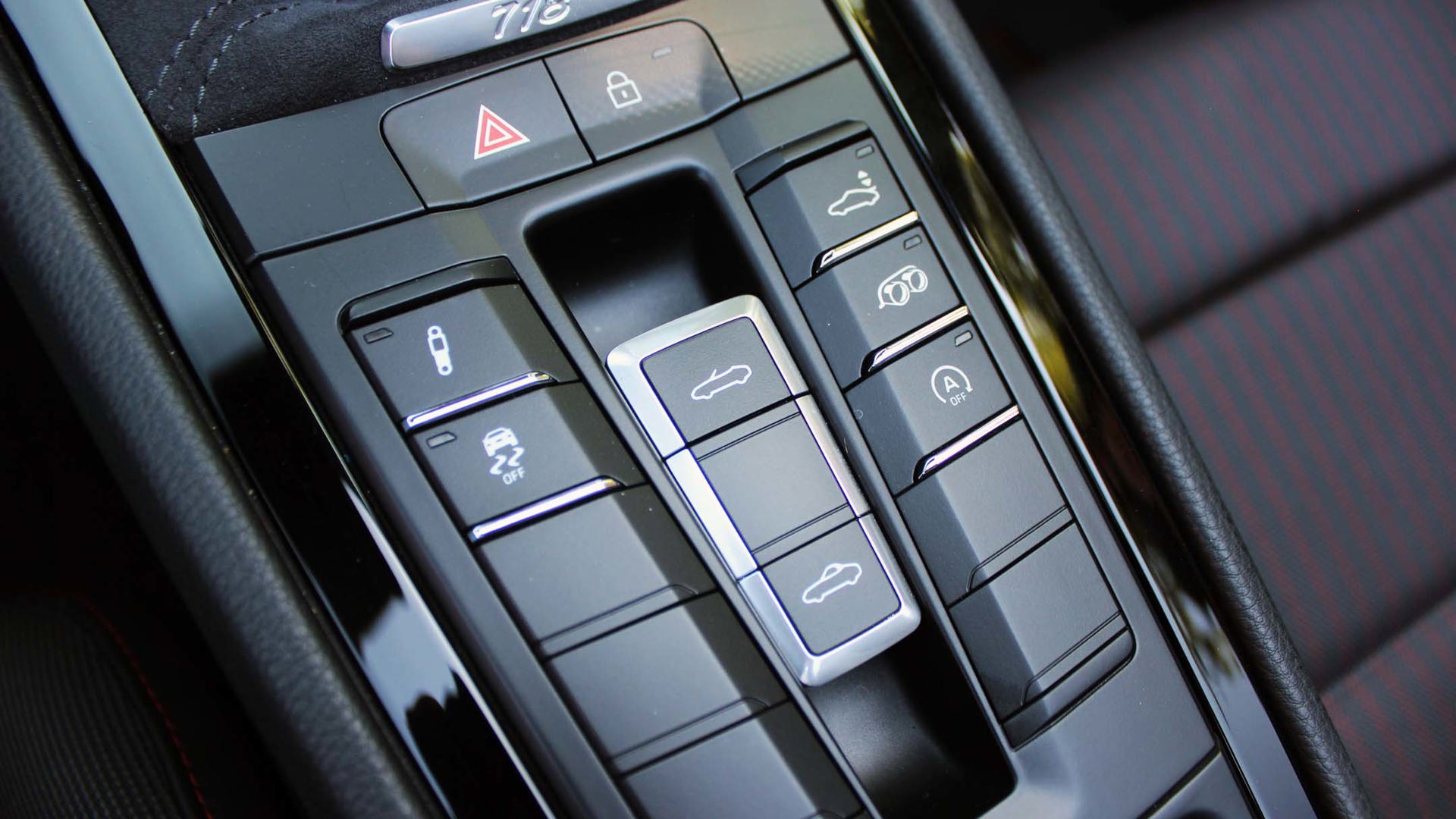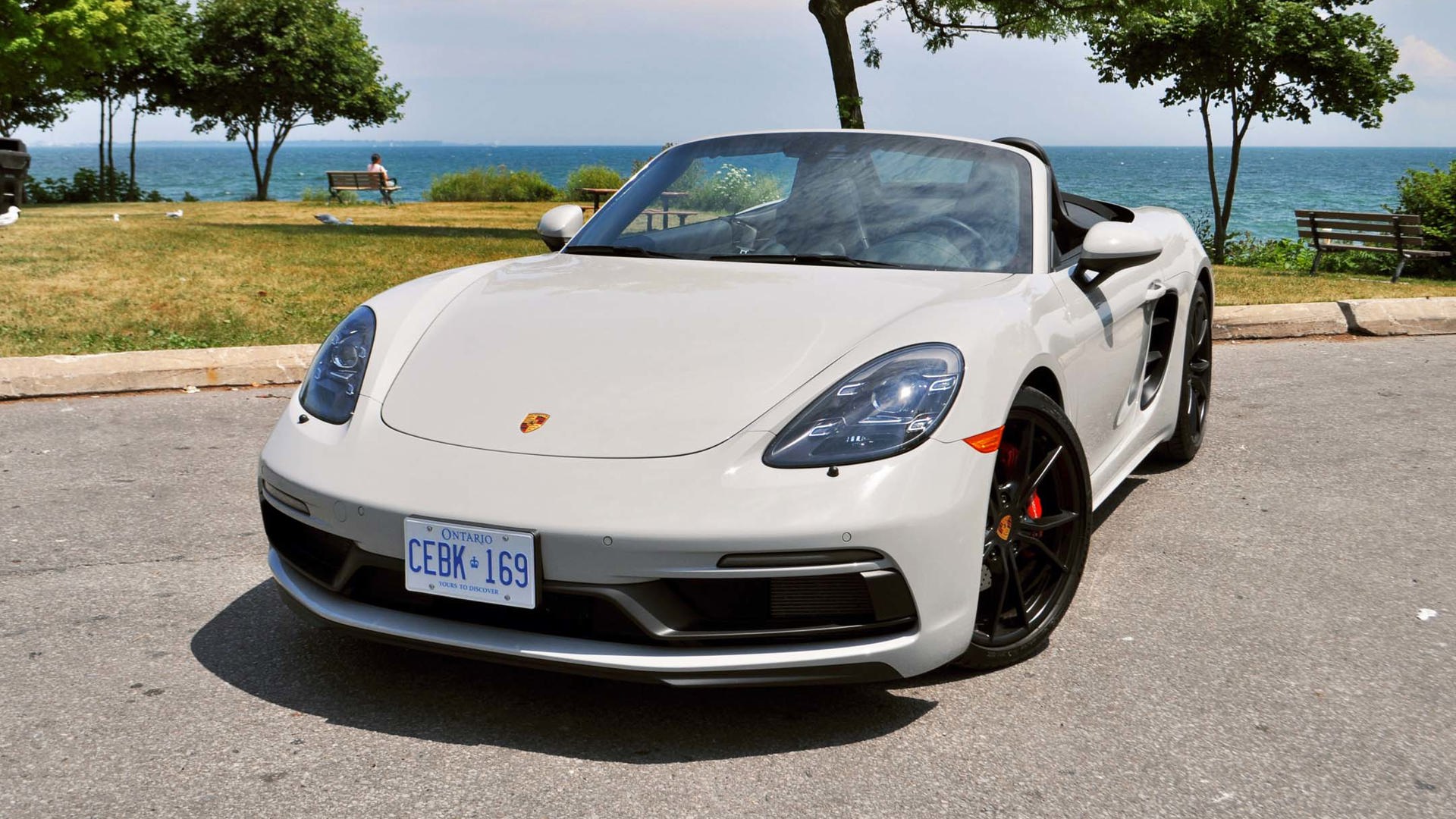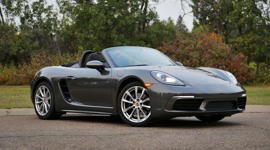If there’s one thing you can say about Porsche, it’s that they know where they’ve come from. They’re not that old of a car company, only really gaining momentum in the ’50s and ’60s but in that short time, they’ve churned out so many memorable models, have been near-bankrupt, and come back to be one of the most dominant sports car and performance SUV/CUV manufacturers out there. Still, they know where their bread’s buttered. Case in point: the 718 T models, built to commemorate the 1968 911T, itself a car designed to deliver the best bang for your buck in the driving department.
Let the Alcantara-wrapped steering wheel and gearknob fall perfectly into your hands and the time to stand on ceremony is over.
First it was the last-gen 911, now it’s the Boxster and Cayman’s turn to get the “T” for “touring” treatment, that is to say a version that puts as much focus on the act of driving as possible through the addition – and subtraction – of certain features.
In the “subtraction” department you’ll find the standard removal of the infotainment system (though once in Canada, it will likely have to be installed as back-up cams are required here), nylon door pulls to save weight, a 20 mm lower ride height and short-throw gearshift. It looks the part, too, especially finished in red like our tester with contrasting black wheels to match the exterior “718 Boxster T” door graphics.
“Addition”-wise, there’s a host of “Boxster T” or “Cayman T” logos found throughout the cabin – on the kickplates, the headrests and the tach – and down behind the front wheels, standard fitment of 20-inch wheels, sport chrono package, and Porsche Torque Vectoring with mechanical rear differential. A six-speed manual transmission is standard – yep, that’s about right – with an optional PDK dual-clutch automatic. It’s a lot of kit, but you can tell that Porsche isn’t just talking the talk; the parts they have given us all point to making the drive as engaging as possible.
Power remains unchanged from the standard Boxster – that’s 300 hp and 270 lb-ft of torque from a 2.0L turbo flat-four, fed – of course – to the rear wheels and the rear wheels only.
718 badging, red nylon door pulls, and red seatbelts aside, you don’t notice a huge difference from a standard Boxster, because there really isn’t any. Which is not a problem because the Boxster already has a near-perfect seating position with a great view out; you can, however, select from three different seat types, including fixed-back carbon options.
Let the Alcantara-wrapped steering wheel and gearknob fall perfectly into your hands and the time to stand on ceremony is over; it’s time to see what this latest Boxster is all about.
As I pulled away, the first thing I noticed was that gearlever action, which is as crispy and easy on throw as its shorter length would suggest; indeed, it becomes quite obvious quite quickly that this is one of those ’boxes that you just want to row and row all over again, just to feel its lovely action at work.
Indeed, it does its part to help you get to the 5.1 second 0–100 km/h time the manufacturer claims; if you don’t quite hit it, it’s not for any issues with the gearlever action, that’s for sure.
You do deal with a little turbo lag at first and it doesn’t pull quite as easily from stop in second gear, so if you’re striving for maximum fuel efficiency by using that tactic, you’ll have to be patient. Better you scrap the hypermiling idea (plus, being a small four-cylinder, it’s not exactly a gas-guzzler anyway) and focus on letting the Boxster T stretch its legs.
Do so, and you’ll be greeted with a surprisingly vocal soundtrack (turbo-fours don’t always act as such) that made the long tunnels we passed through in Germany’s Baden-Württemberg region that much more of an event. It’s a nice, metallic sound that does a fine job of mimicking the flat-six the Boxster used to get (and will be getting again soon, when the Spyder model drops later this year). And it’s accompanied by some serious acceleration, especially once that tach needle sweeps past the 3,000 rpm mark; then, the 718 T surges forward with the faintest of turbo whistles and you want to grab that beautiful Alcantara wheel as tightly as possible.
Put it in either of the two sport modes via a dial at the four o’clock position on the wheel, and you’re treated with all sorts of wonderful banging and popping on the overrun and when letting off the throttle. I don’t know about you, but for me, that is one of the all-time sounds of classic motoring, the kind of motoring Porsche is aiming for with the 718 T.
Of course, it’s no longer the ’60s and all manner of technological advancements have been made to chassis tech. For the 718 T, a big addition that comes as standard are dynamic gearbox mounts that neutralize the mass of the gearbox so it doesn’t affect the handling by tossing itself to-and-fro through the bendier stuff.
We had the chance to tackle a few juicy bends which are plentiful here; you just need to remember that on some of these bendier backroads there may be no middle line even though it is bi-directional. It should come as little surprise that as responsive as the powertrain is, it’s the Boxster T’s attitude in the turns that stick with you.
It starts with the steering, which is a precise as you’d think it should be coming from Porsche, and it’s followed by that firm body and chassis. Apex after apex is dispatched with gumption as you use the pontoon-like fenders as a kind of sight, helping you place the Boxster perfectly. Any driving instructor will tell you that a huge part of any drive is your vision, and a car – like the Boxster – that gives you a clear view out and forward is a good start. After that, it’s just a matter of twisting that wheel and hopping across the pedals.
It’s not all perfect; the Boxster still has cupholders that look alien-like and tacked on as they protrude from the dash in front of the passenger, and that chassis can be a little unforgiving over some rougher terrain – likely not terrain most Boxster T drivers will likely be traversing, but you do have to steel yourself as you head over level crossings and so forth.
That, of course, is a miniscule price to pay for a sports car that walks, talks and acts like a sport car should. Like the 911T before it, the Boxster T has the essence not just of its model line, but of Porsche as a whole: analogue for the most part (manual transmission, mechanical diff) but modern and technological when it needs to be (active mounts, turbo power) and with looks to kill.
While there’s no pricing at this juncture, if the 911 is any indication, the 718 T should fall between the standard 718 and 718 S models when it arrives in Q1 of next year. Having said that: if you want a 718 T experience similar to the one we had and you can do without the short-throw shifter, nylon pulls, 718 T graphics and wheels (and a 10 mm suspension drop instead of a 20 mm drop), almost everything that comes standard on the T can be added to the Boxster here in Canada, bringing the MSRP to around $75,000. Me? The only thing that I could really see myself missing is the short-throw shifter. The rest of the package – torque vectoring, sport chrono, zippy turbo power – is just so darn appealing.
